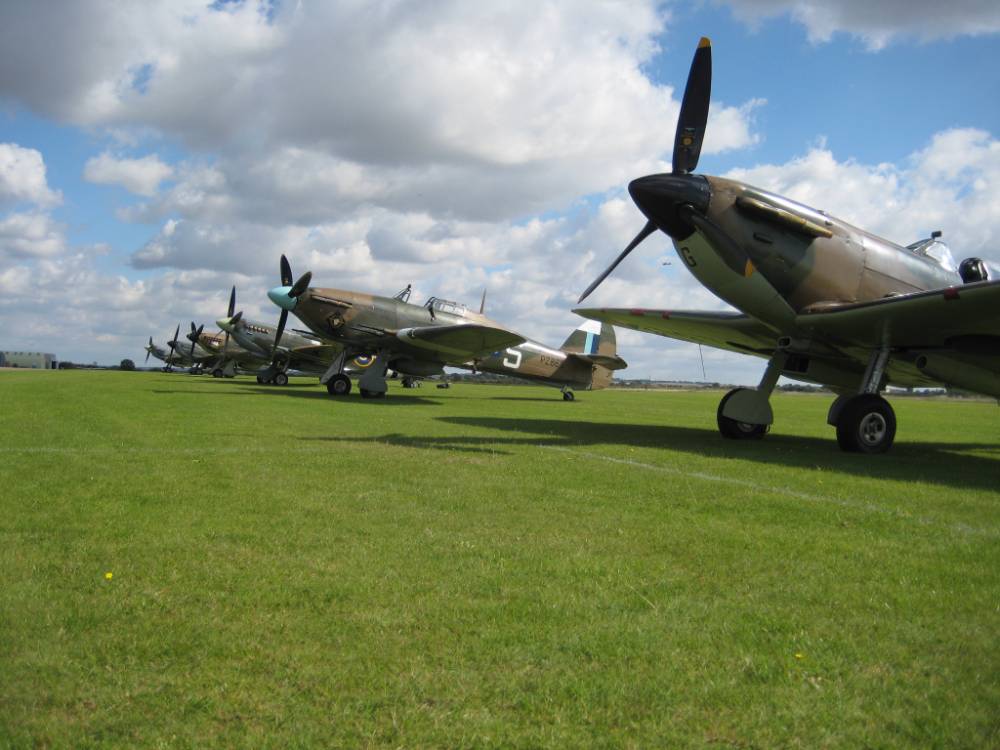
Image courtesy of Chris Cannon
Lancaster PA474
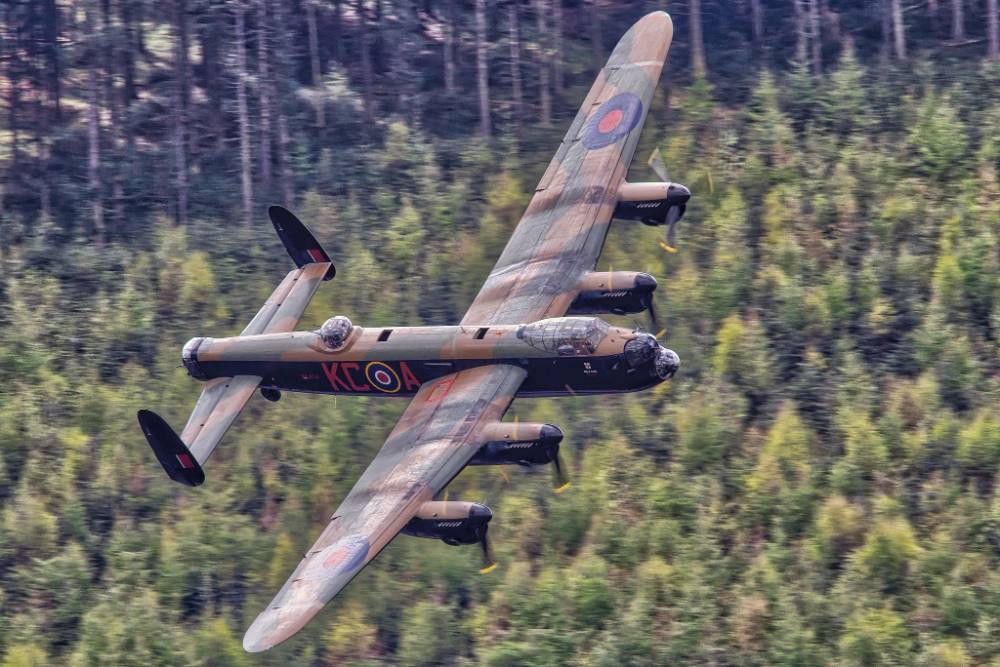
Image courtesy of David Smith
In 1965, Wing Commander MA D’Arcy, OC 44 Squadron at RAF Waddington, requested that Lancaster PA474 be transferred to his squadron where it would be maintained in flying condition.
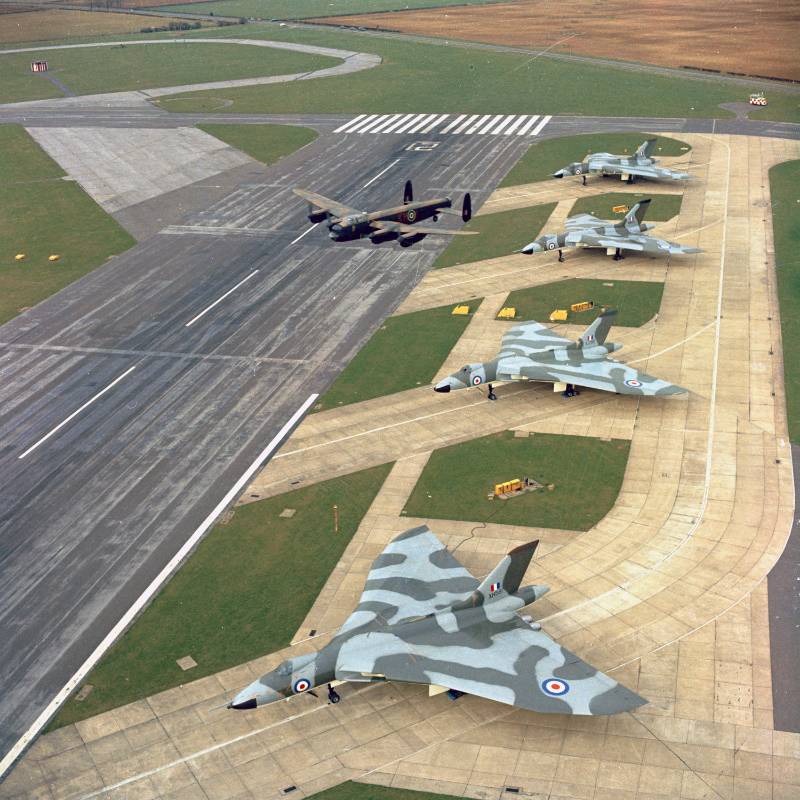
Crown Copyright
His application was accepted. and over the next eight years, aircrew normally used to operate Vulcans, would fly the Lancaster at air shows and ceremonial events.
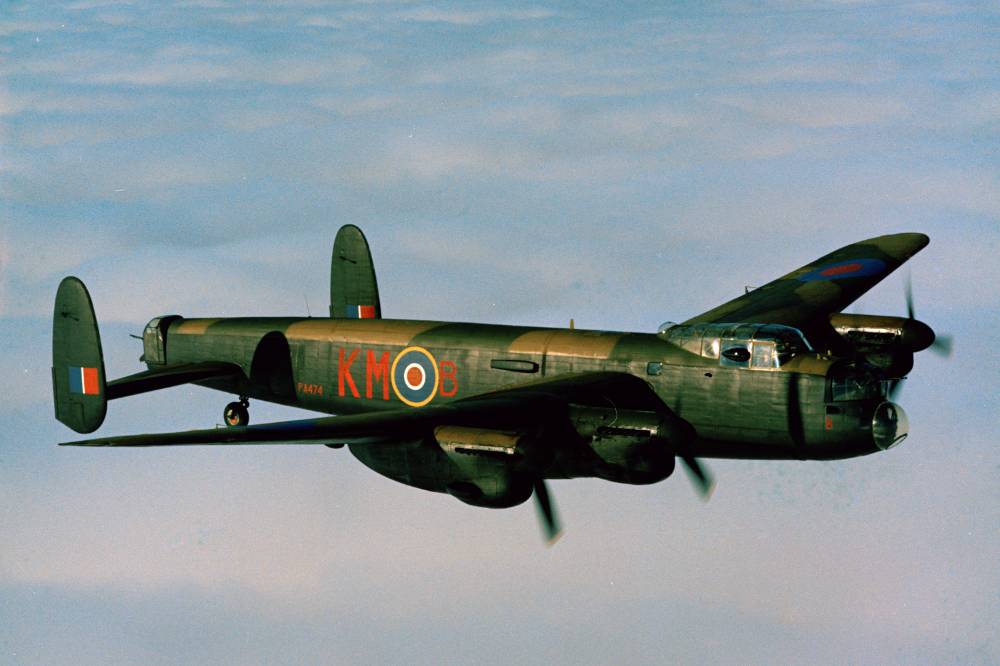
Crown Copyright
Lancaster
As with all of the Battle of Britain Aircraft, periodically the Lancaster has to be dismantled before undergoing a full restoration, below are some images taken at Coventry during one of the major overhauls.
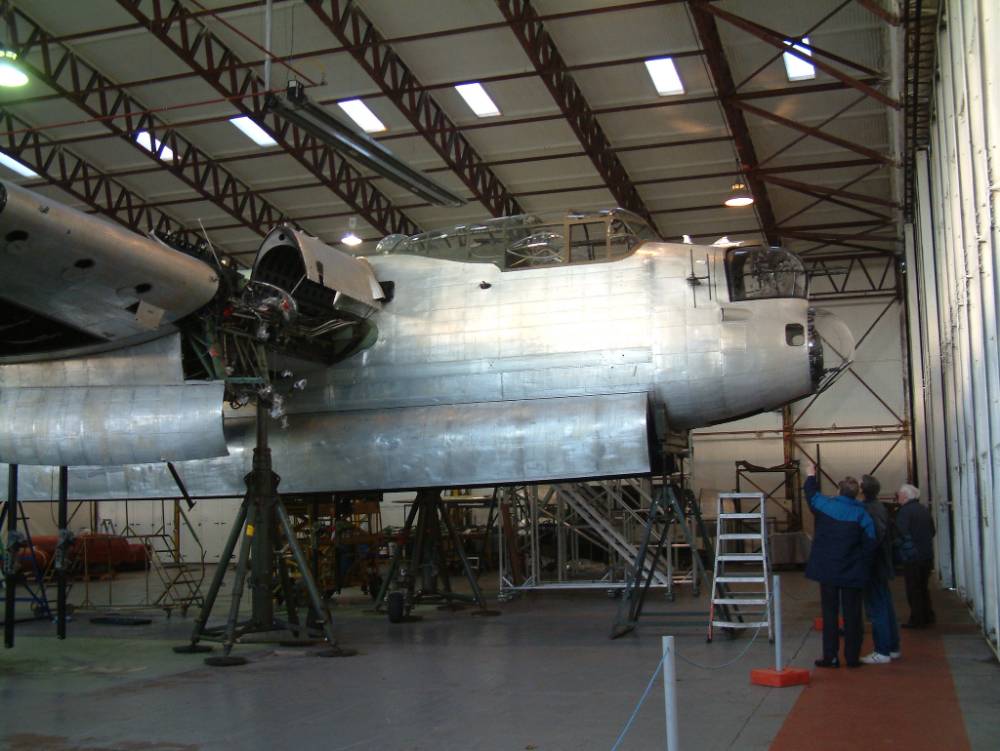
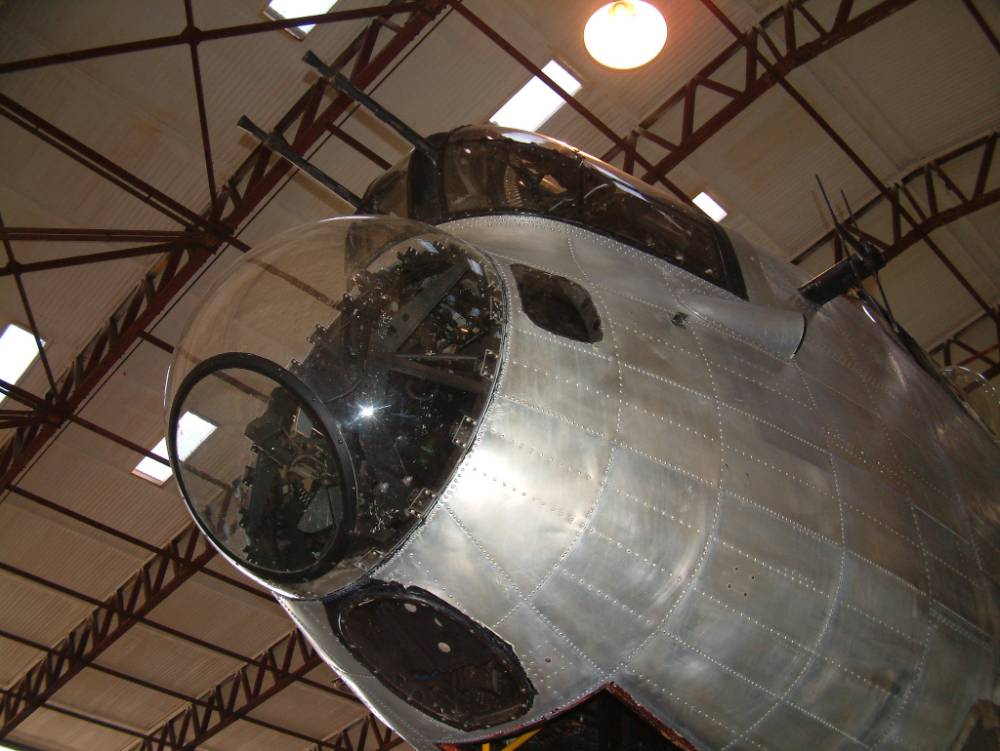
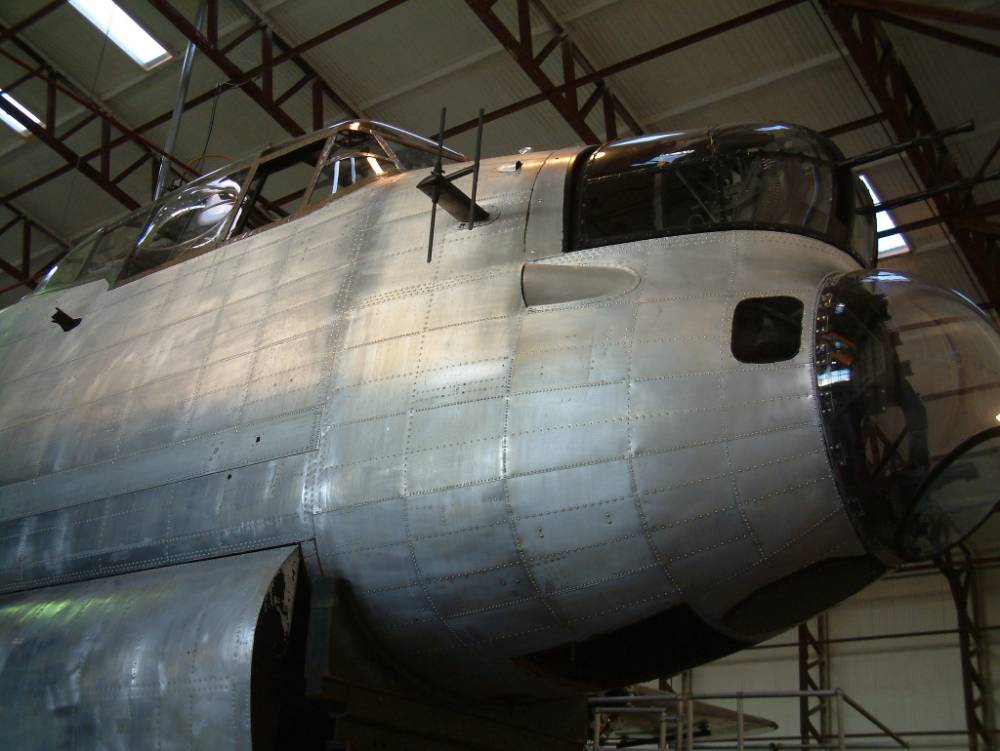
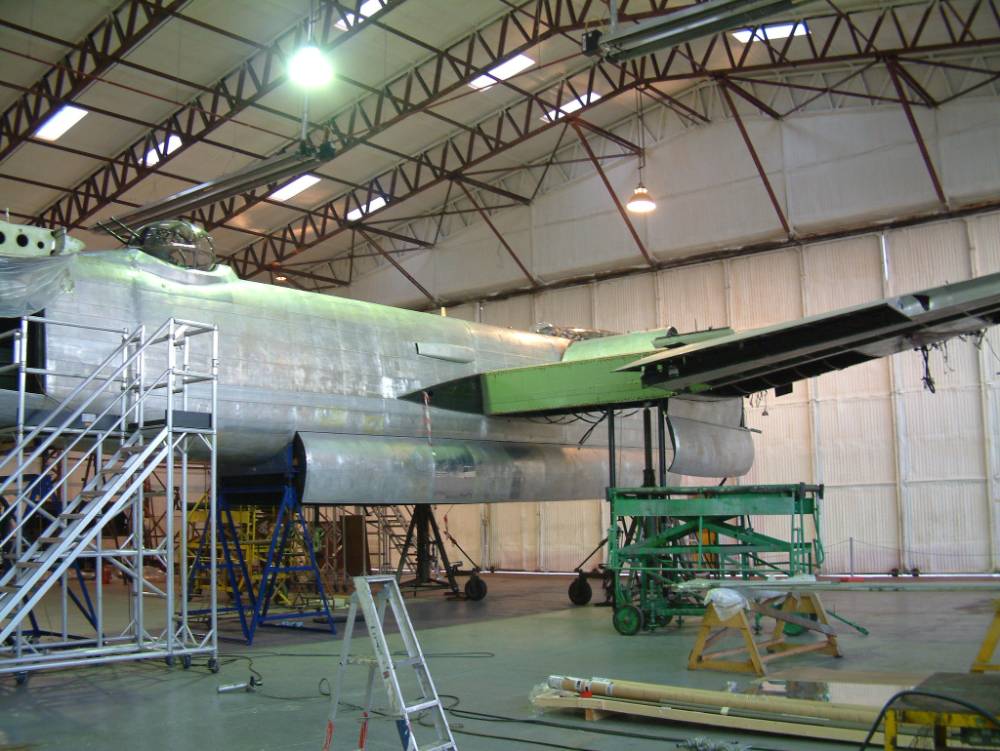
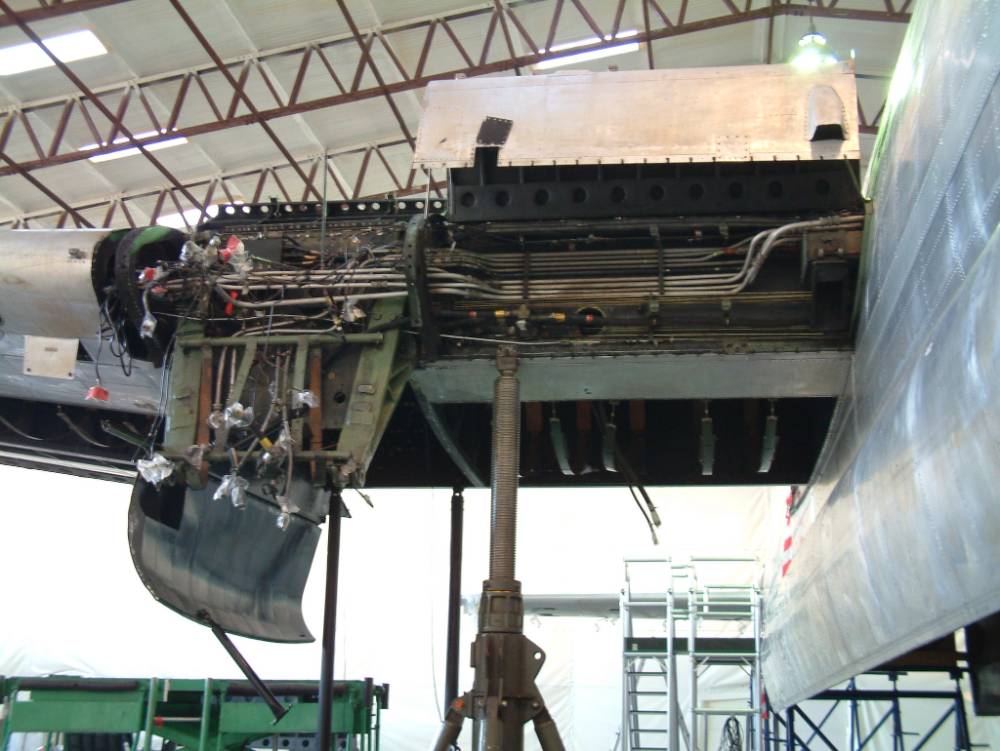
Images courtesy of Simon Westwood
Below a mixture of images of Lancaster PA 474 doing what she does best.
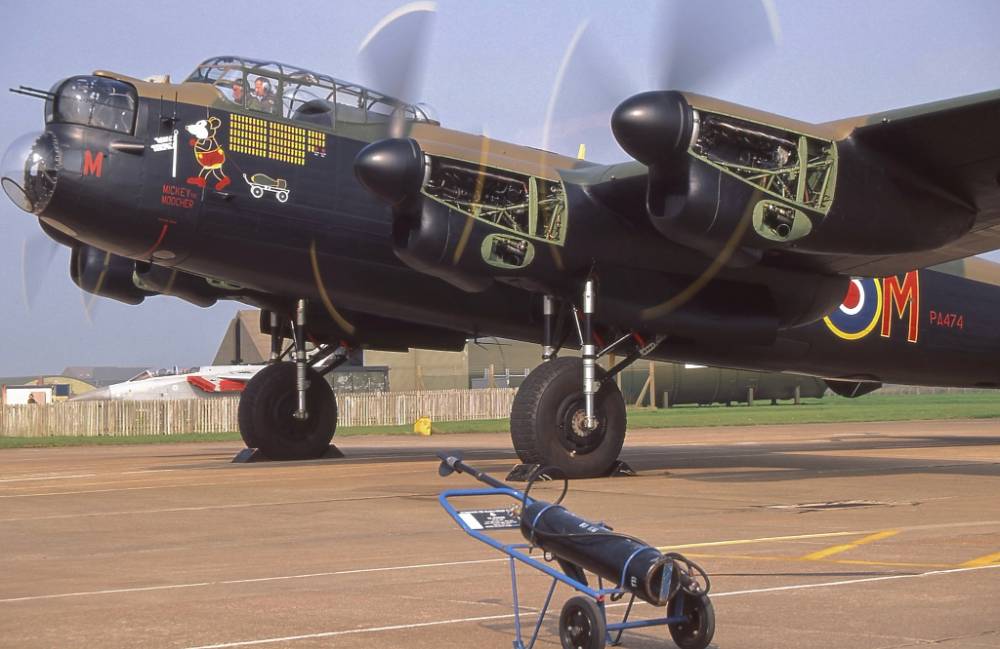
Image courtesy of Phil Claydon
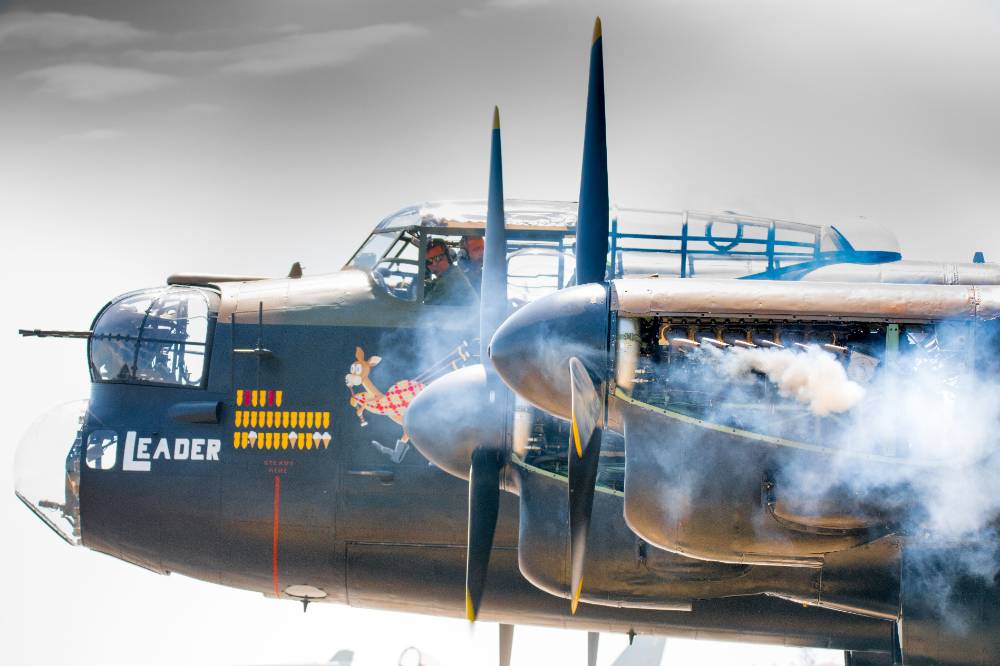
Image courtesy of Mark Suffield
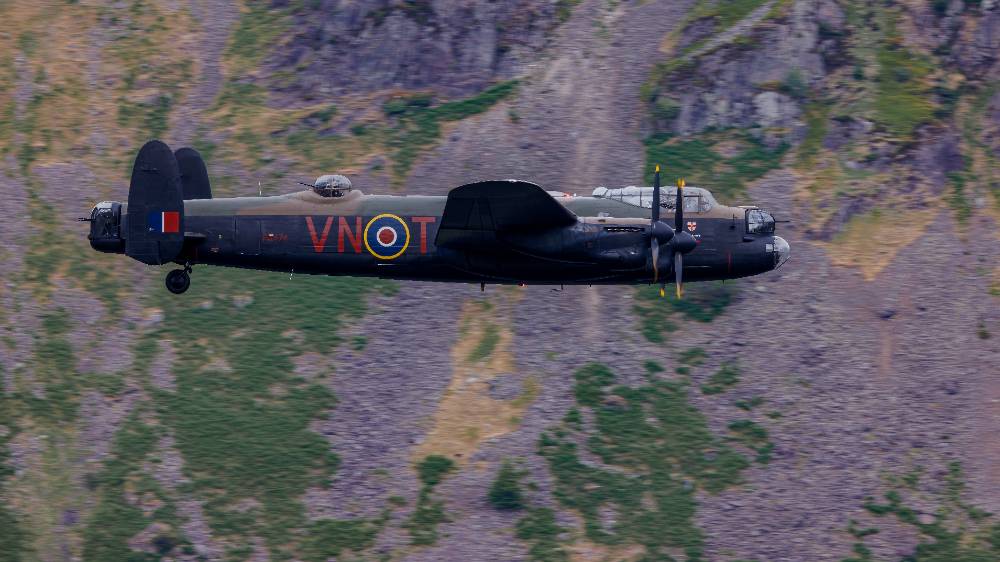
Image courtesy of Neil Draper
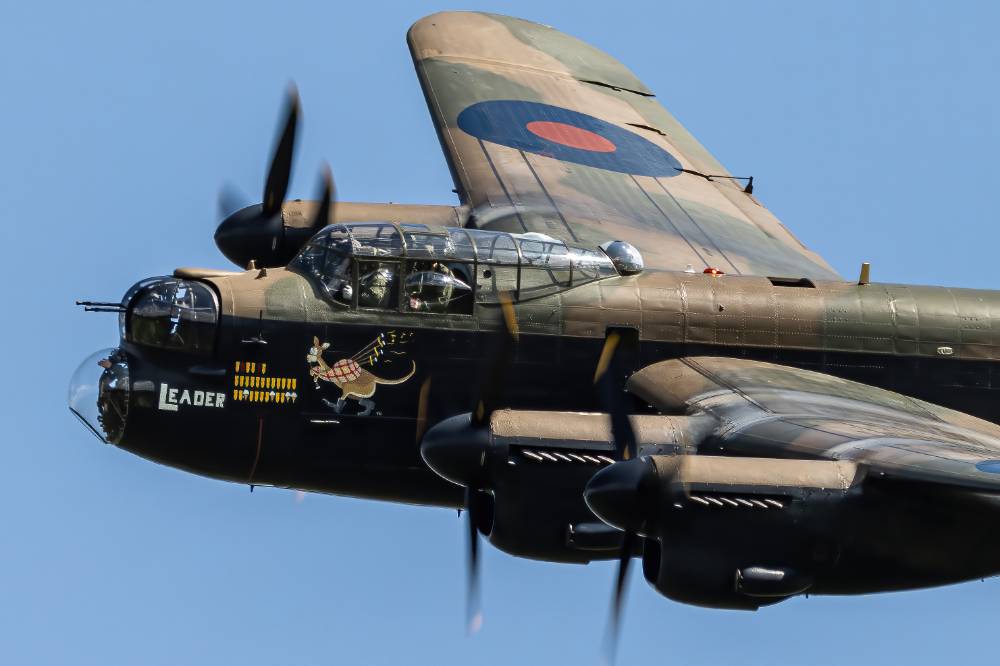
Image courtesy of Adam Lee Herbert
The latter included the parade to mark the amalgamation of Bomber and Fighter Commands into Strike Command in April 1968, an event which was preceded with a formation featuring PA474 in the company of LF363 and AB910 in what would be the first of countless such appearances in later years.
By 1973, maintaining the Lancaster was becoming more difficult and the aircraft was transferred to the Memorial Flight at RAF Coltishall where it could receive the required level of care it needed, In fact PA474 was to stay at Coltishall for a number of years, before moving to RAF Coningsby, the present home to the now named Battle of Britain Flight.
Dakota ZA947
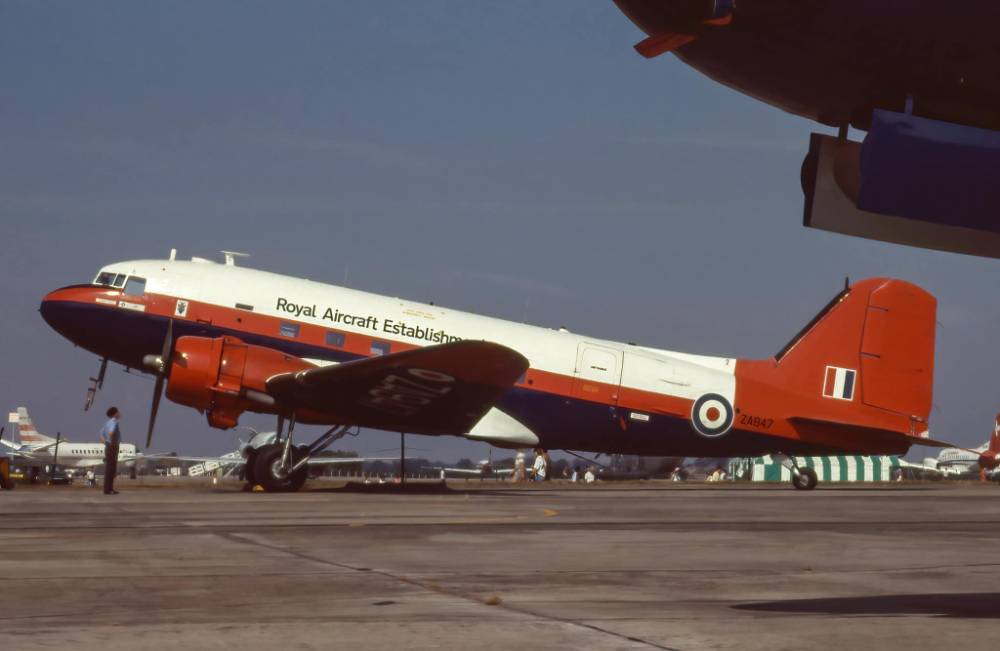
Image courtesy of David Cain
Dakota ZA947 came to the BBMF in 1993 as a replacement for the Devon, The Dakota was previously used by the Royal Aircraft Establishment, and was originally in service with the Royal Canadian Air Force. She was built in 1942, as a C-47A ‘Skytrain’, by Douglas at its facility at Long Beach. She has been in service with the BBMF at Coningsby for over 25 years and as well as being used for crew training, is a very popular item for airshows and fly pasts.
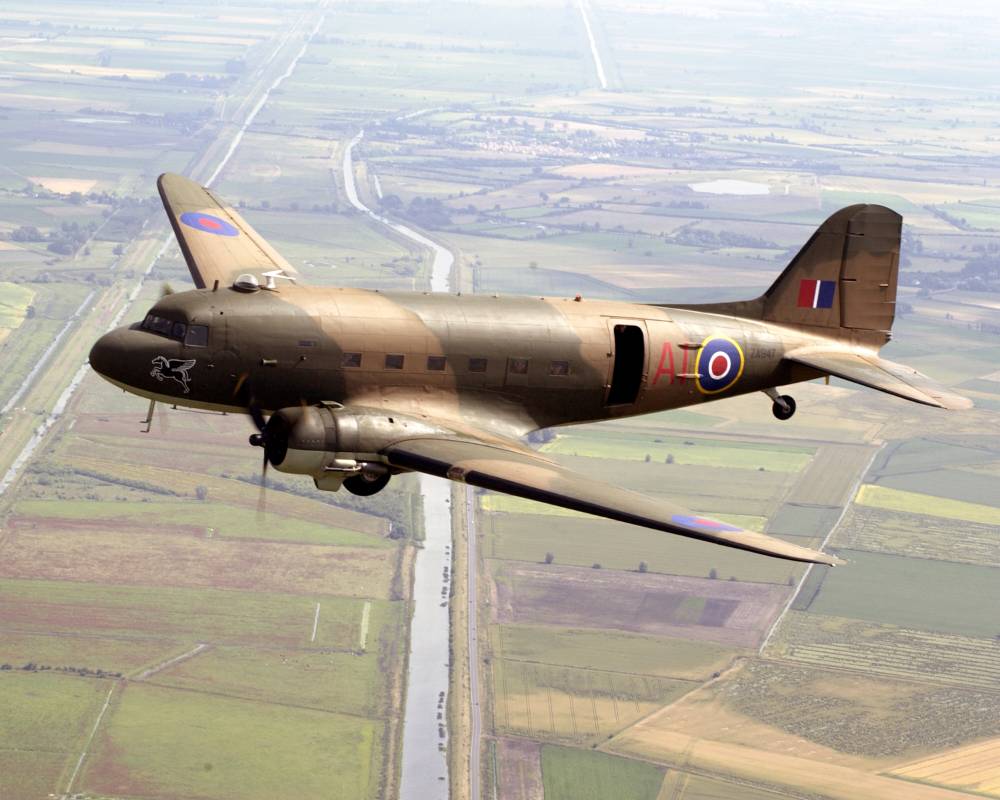
Crown Copyright
As with most of the BBMF aircraft the Dakota has worn different paint schemes over the years.
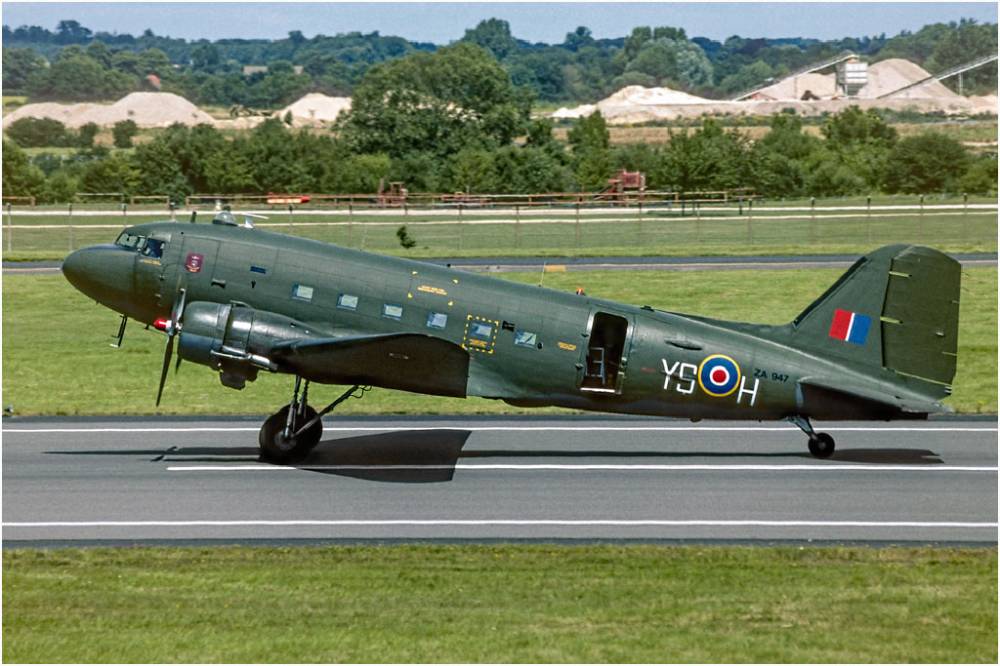
Image courtesy of Colin Smedley
And as she is, in her present paint scheme, which she has worn for several years.
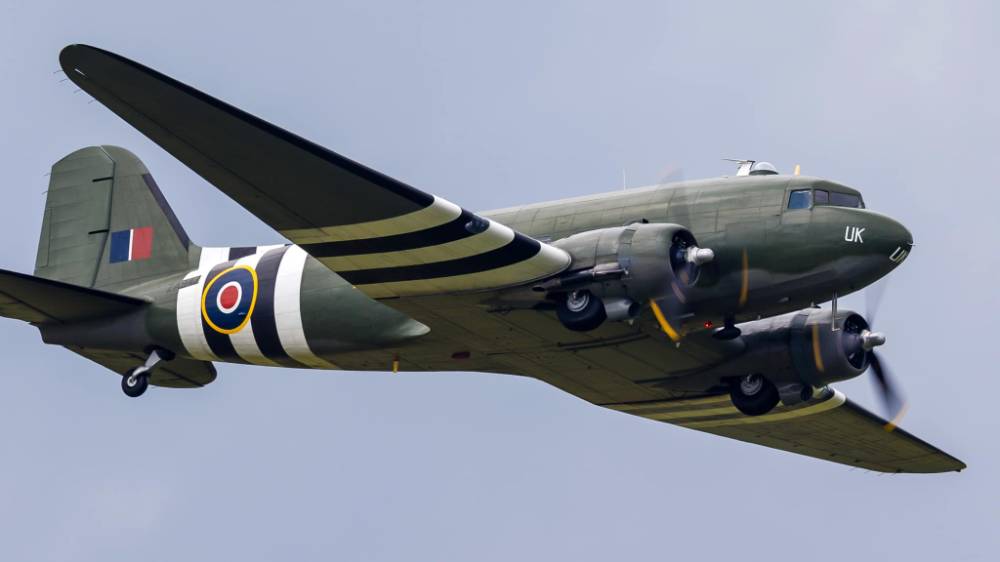
Image courtesy of Stewart Jack
The Hurricane
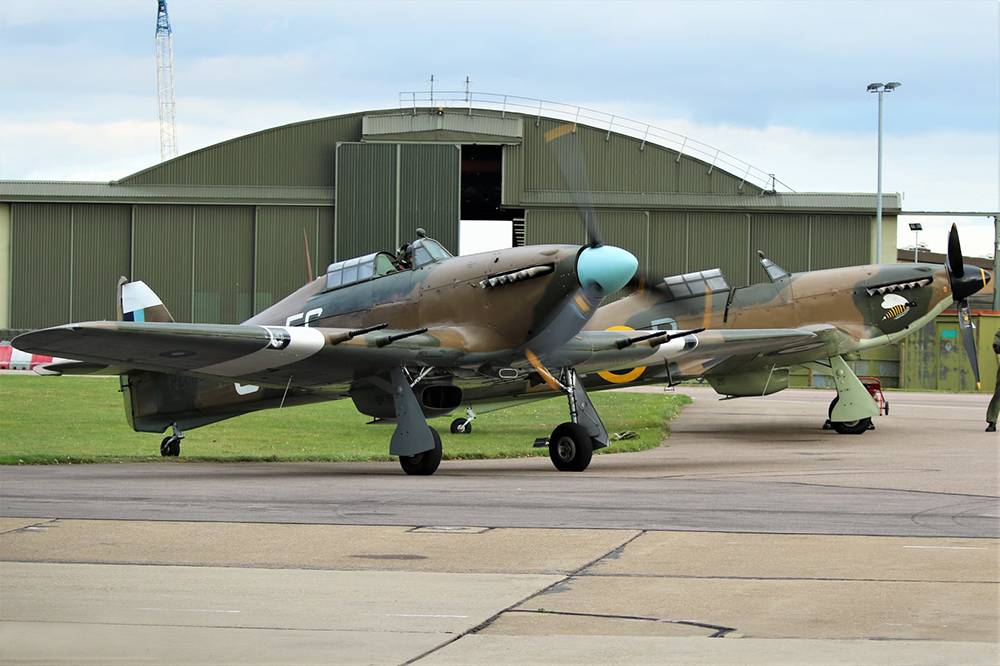
Both aircraft above with former colour schemes
Image courtesy of Kevin Mape
The BBMF have two Hurricane's on strength LF363 and PZ865
Hurricane LF363
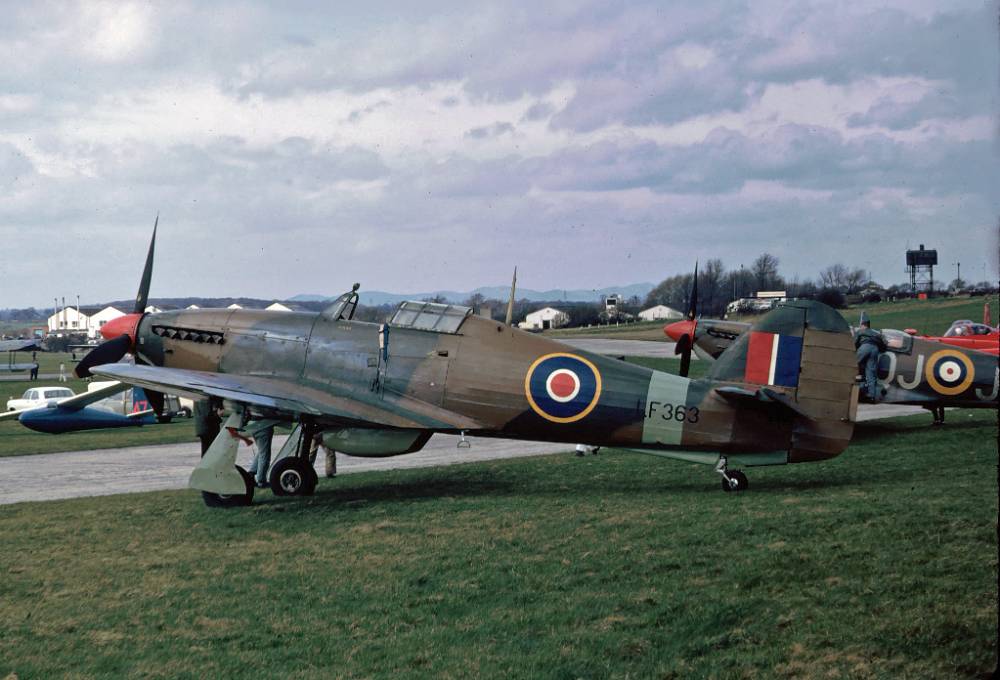
Above LF363 in her present colour scheme
Image courtesy of Richard Hall
In July 1957, LF363 became a founding aircraft of the RAF Historic Flight, and was based at Biggin Hill in Kent, Coltishall in Norfolk and Coningsby in Lincolnshire. The Historic Flight was the forerunner of what is now known as the Battle of Britain Memorial Flight. LF363 is a Mk IIc Hurricane, and thought to be the last to have entered service with the RAF.
Over the years LF363 has been painted in several different colour schemes, some included below.
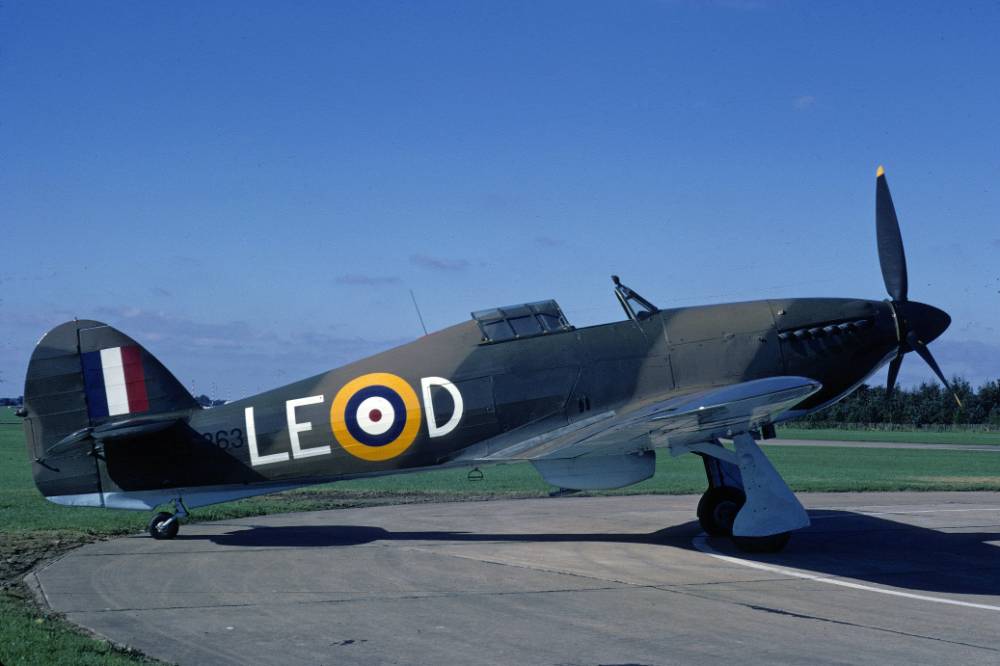
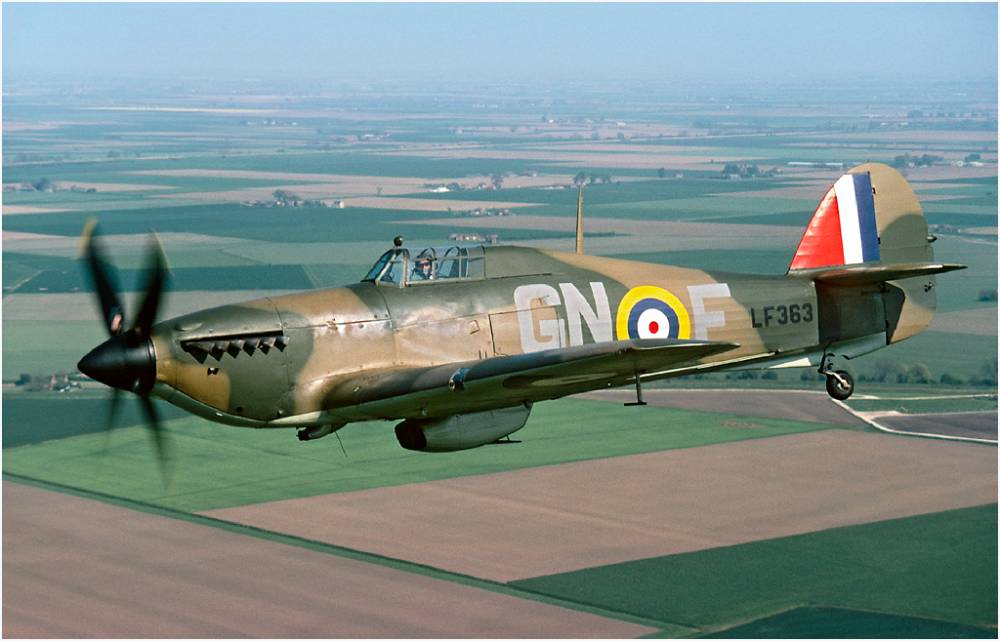
Above images courtesy of Adrian M Balch
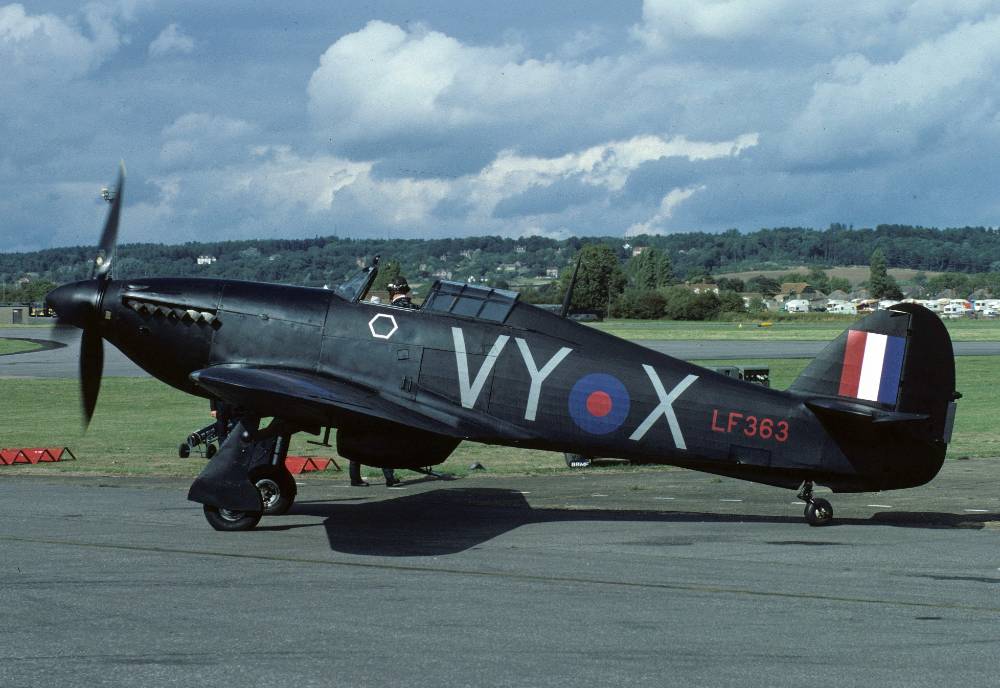
Image Courtesy of Colin Smedley
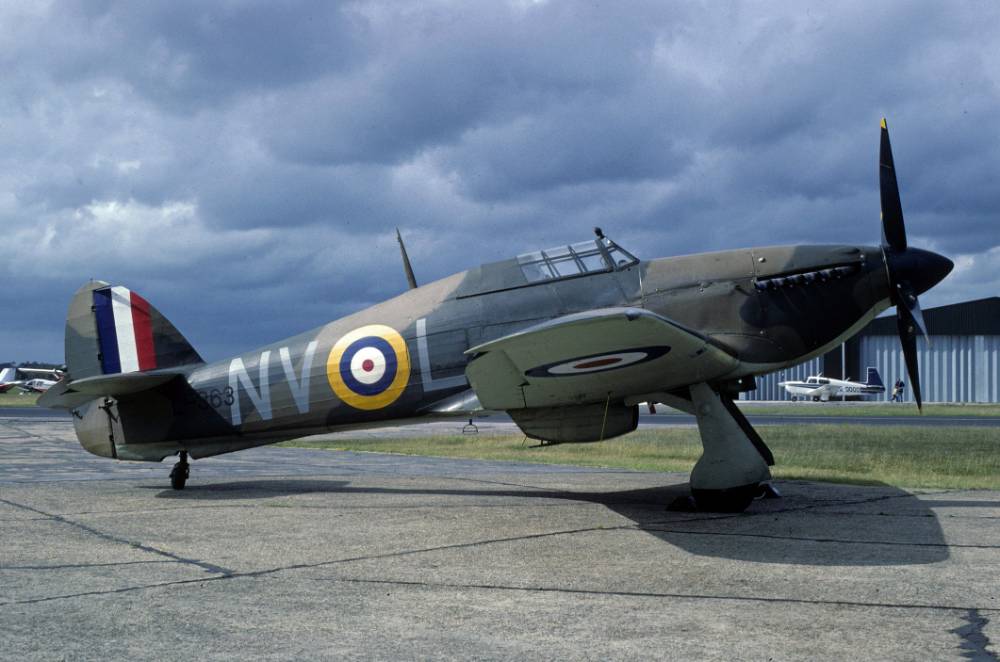
Above images courtesy of Adrian M Balch
Hurricane PZ865
PZ865 was gifted to the flight at RAF Coltishall in 1972, and is reputed to be the last Hurricane ever built. Throughout the last fifty years PZ865 had had several different paint schemes, some of them included below.
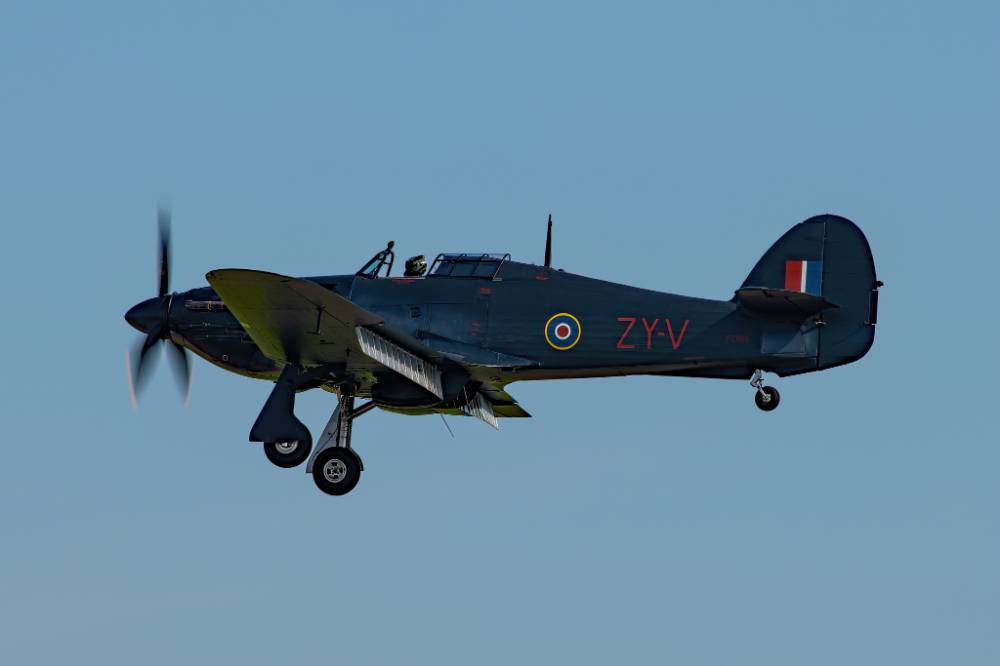
Image courtesy of Richard Hall
Above PZ865 in her latest paint scheme.
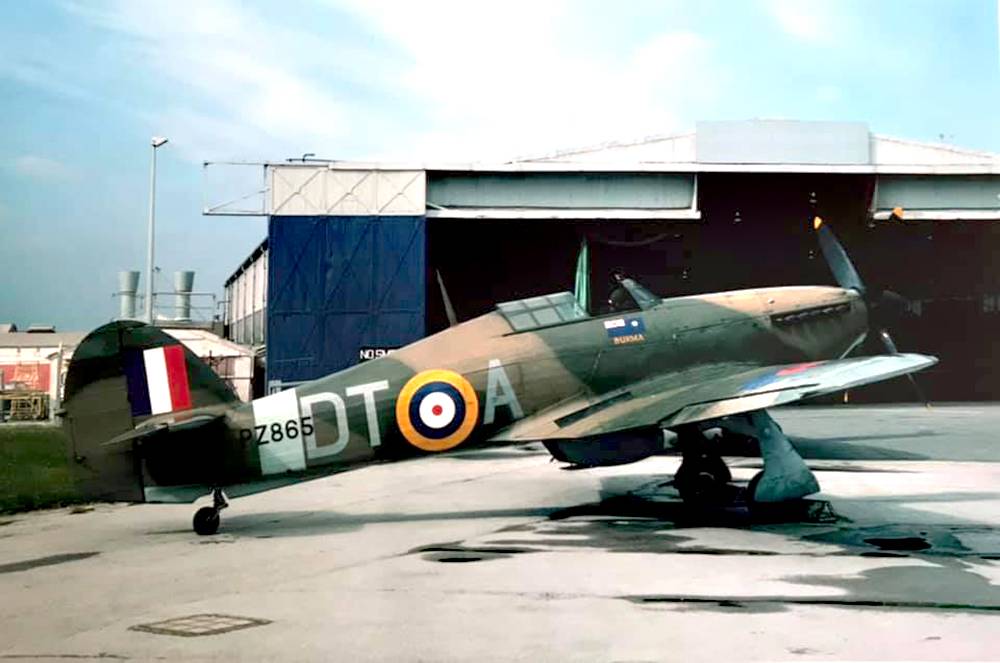
Image courtesy of Andy Amor
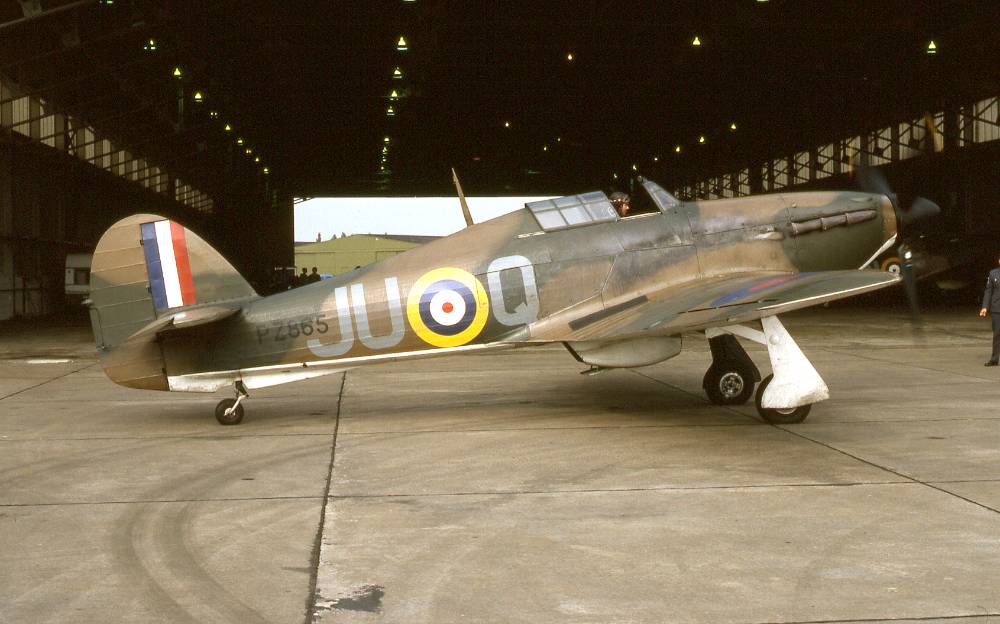
Image courtesy of Dave Hedge
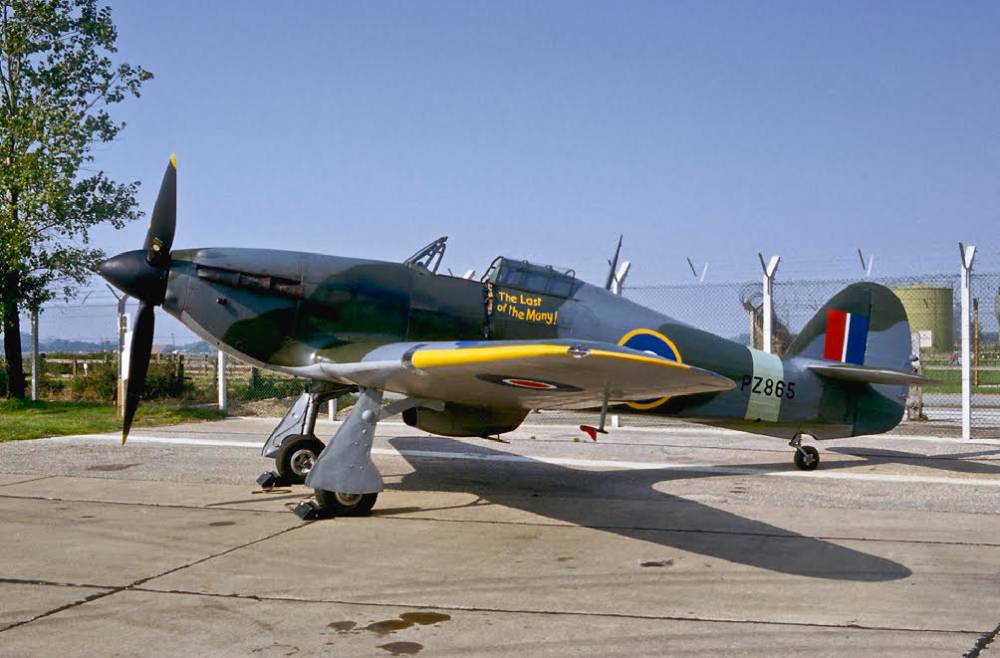
Image courtesy of Colin Smedley
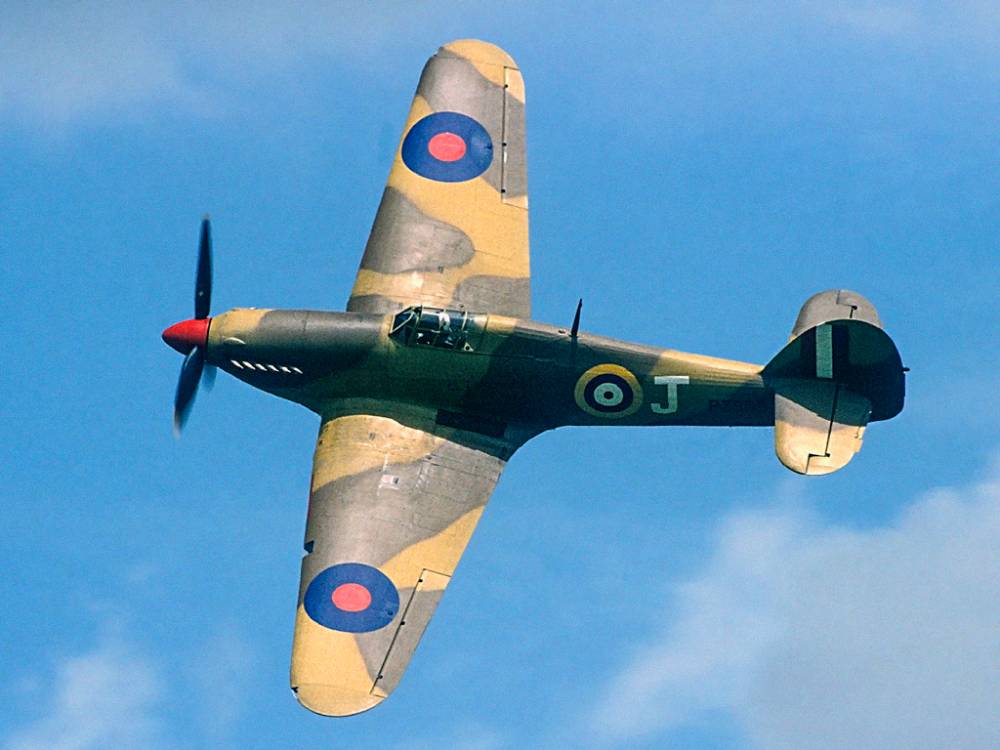
Image courtesy of Colin Smedley
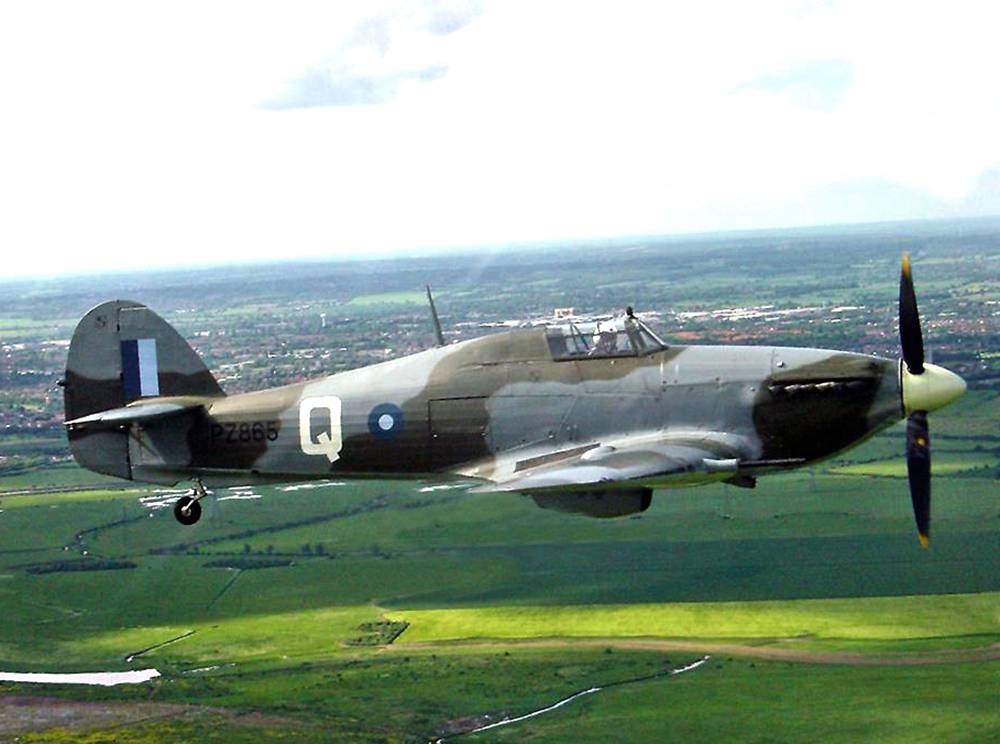
Image courtesy of Phillip Elcock
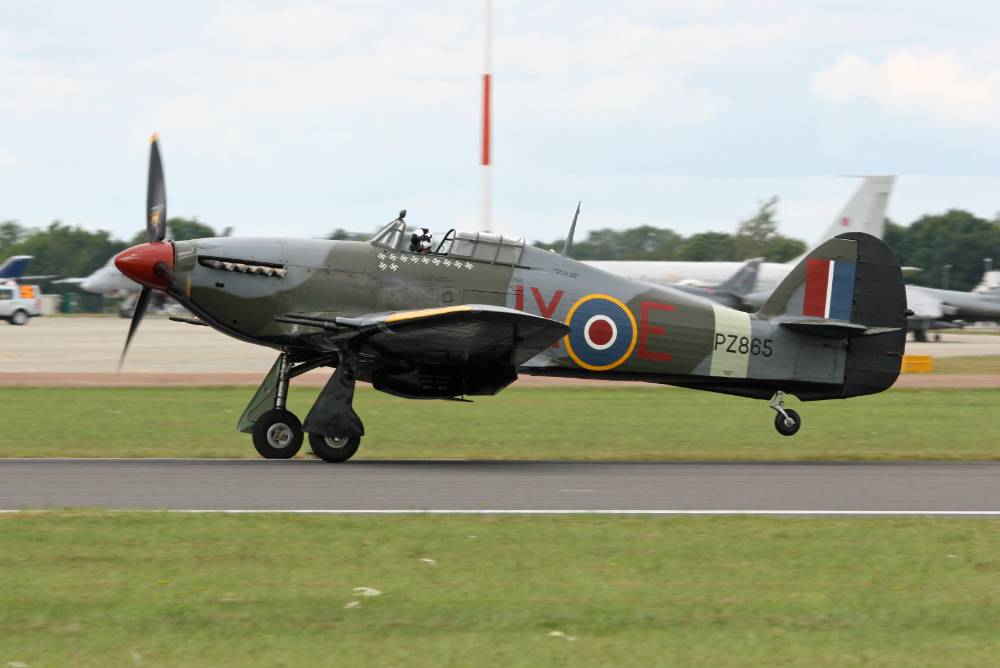
Image courtesy of Mark Young
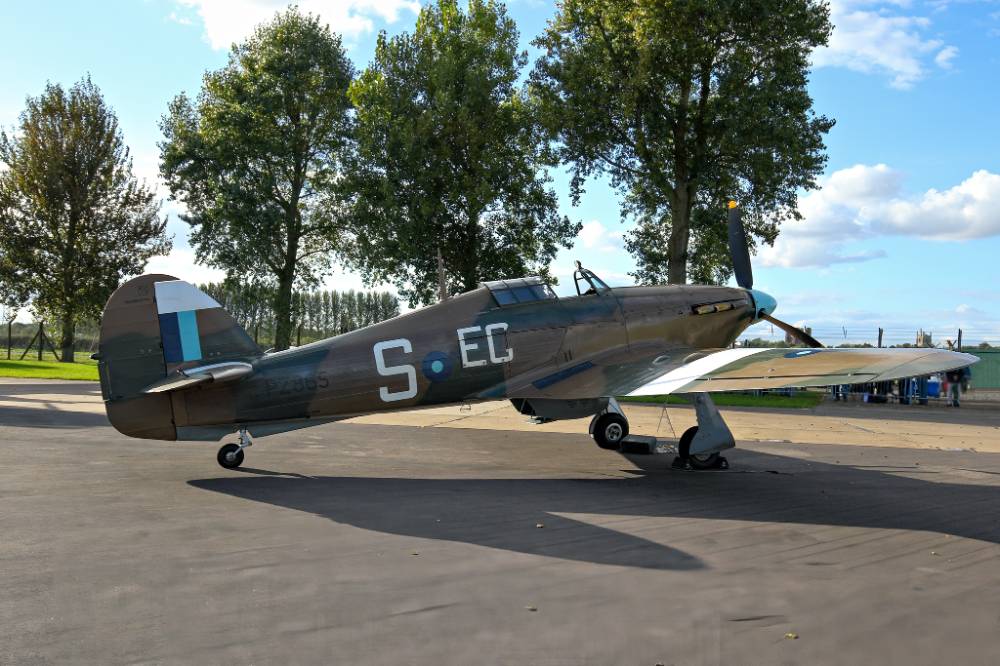
Image courtesy of Mike Gauckwin
The Spitfires
The Battle of Britain Flight operates six Spitfires,and as with the flights other aircraft, they have there colour schemes changed every few years
The MK19s
PM631
One of over two hundred Griffon-engined photo reconnaissance Spitfires built, Spitfire PR Mk XIX PM631 entered service at RAF Benson in June 1946, joining the then Historic Flight in 1957.
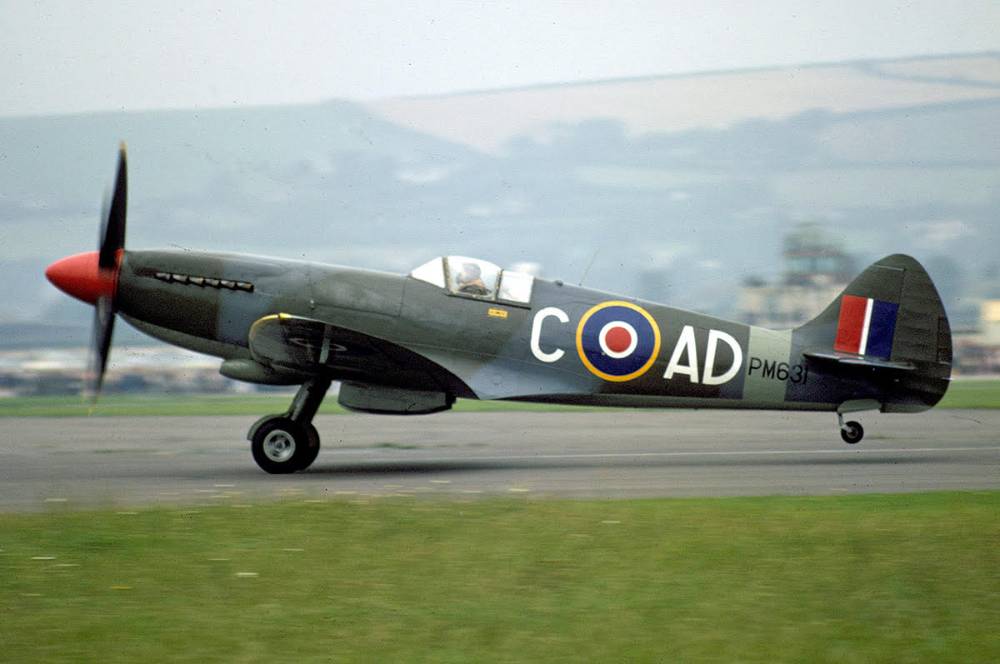
Image courtesy of Adrian M Balch
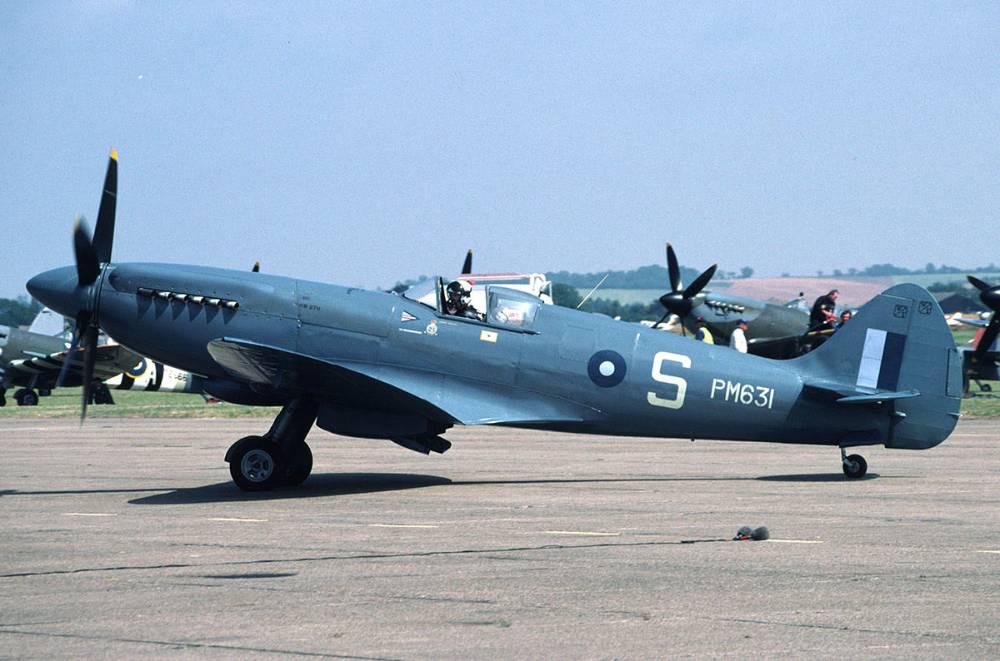
Image courtesy of Adrian M Balch
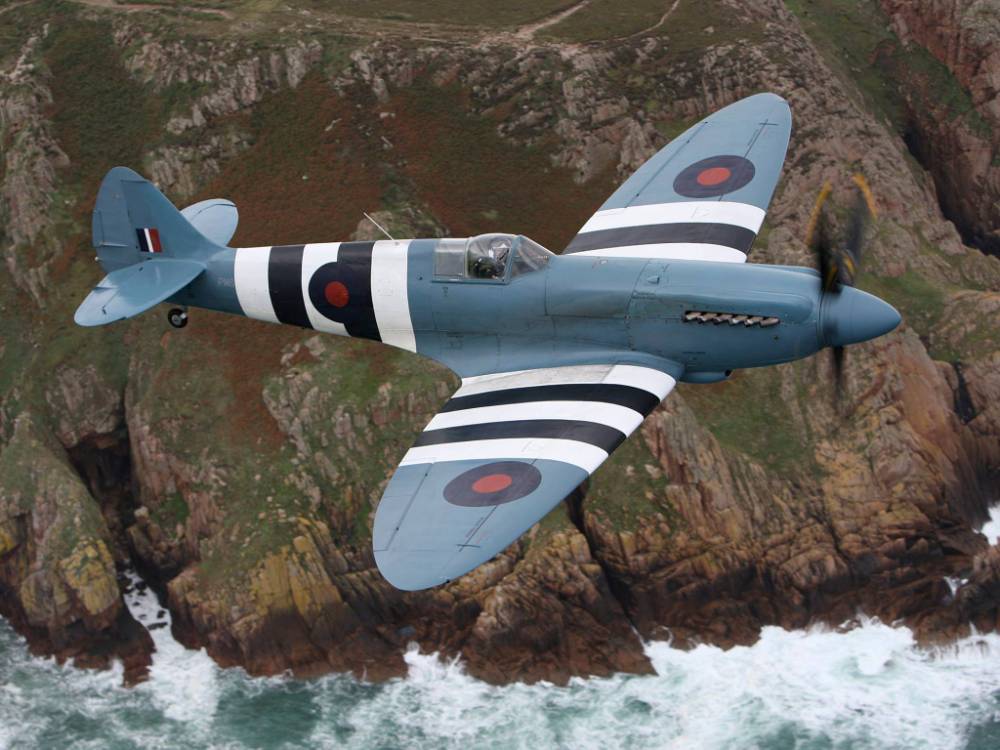
Image courtesy of Craig Bampton
PS915
Spitfire PR Mk XIX PS915, another long time aircraft with the BBMF. This aircraft had several different roles in her early years, including a static part in the Battle of Britain film and even serving as a gate guard.
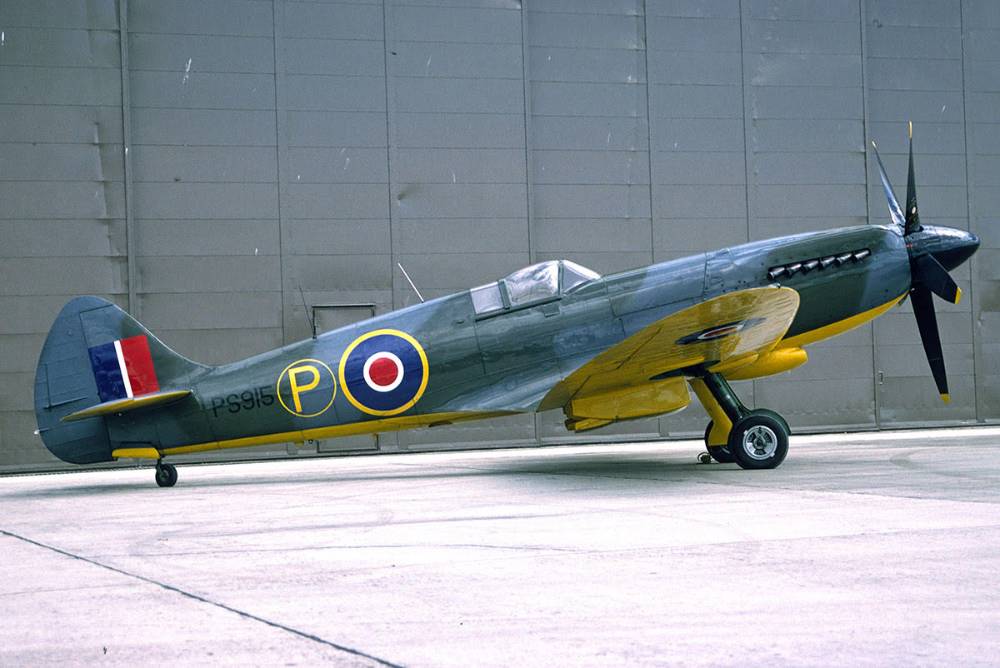
Image courtesy of Adrian M Balch
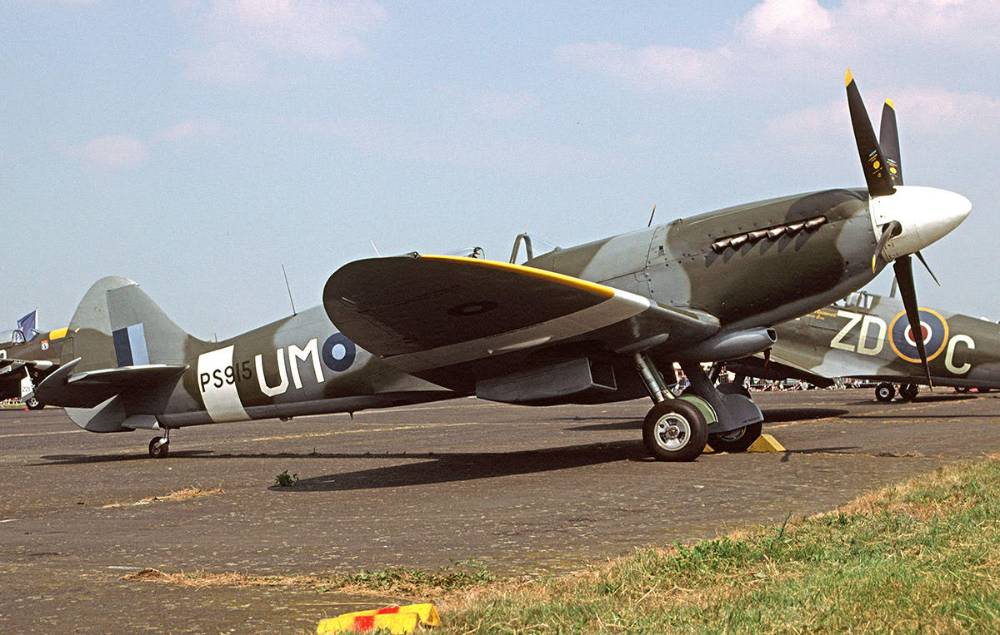
Image courtesy of Adrian M Balch
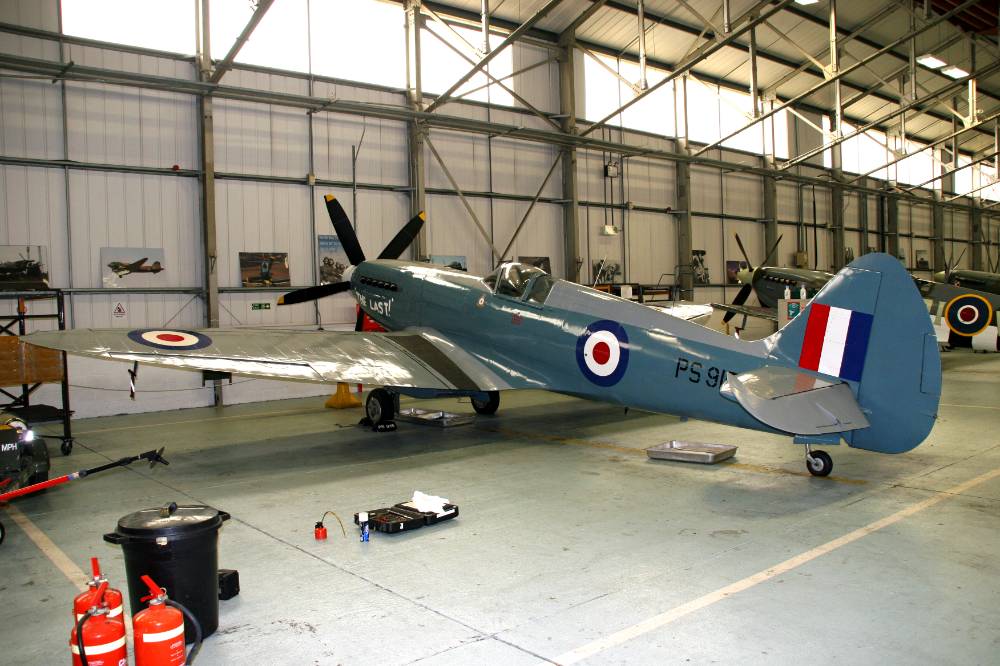
Image courtesy of Mark Young
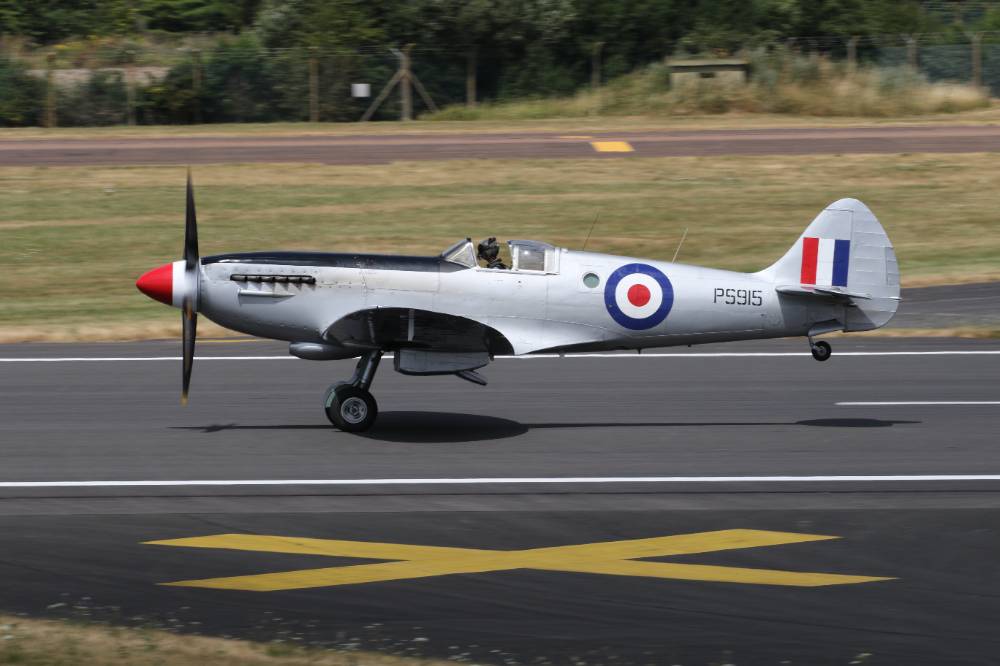
Image courtesy of Mark Young
Spitfire AB910
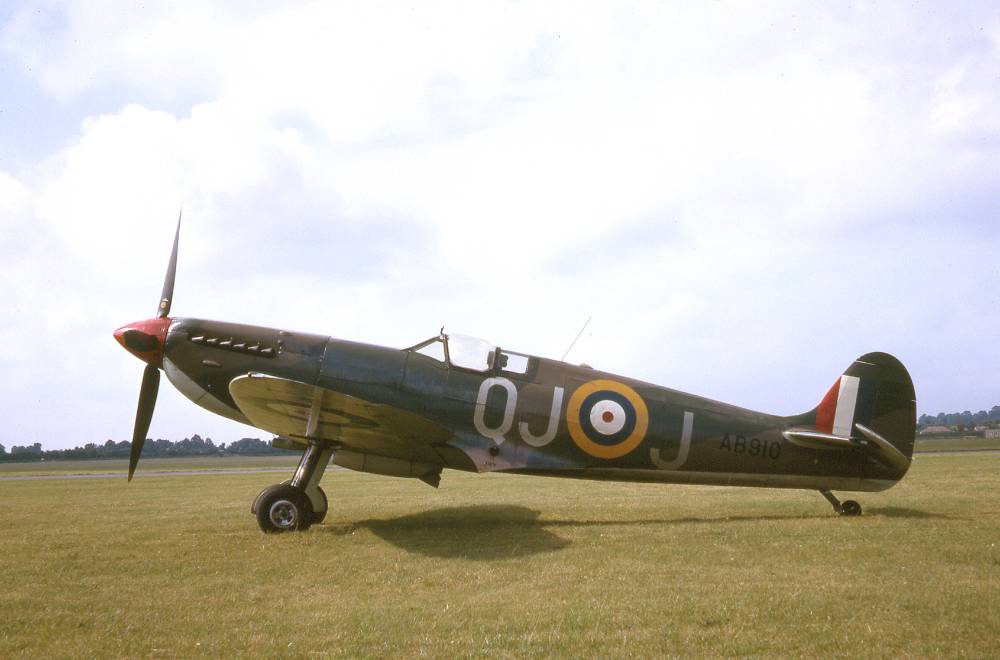
Image via Dave Hedge
Spitfire Mk Vb AB910 was built at Castle Bromwich in 1941 and was delivered to number 222 Squadron at RAF North Weald on 22nd August 1941, and served with another six squadrons before going into private ownership as an air racer.
In 1955 she was owned and displayed by Vickers-Armstrong and in1965 acquired by the Memorial Flight where she has been to this day.
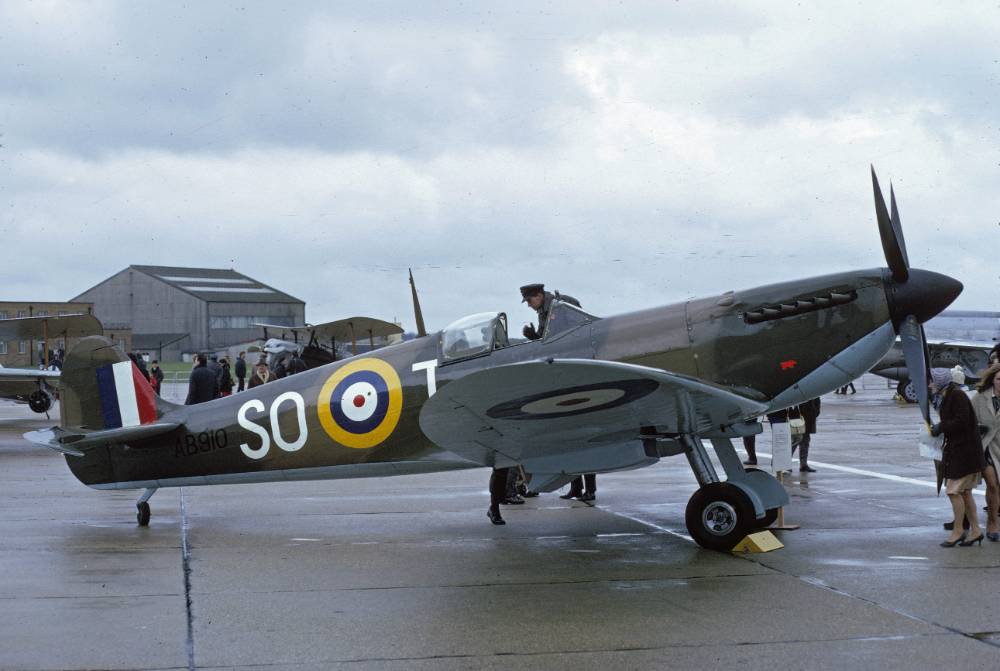
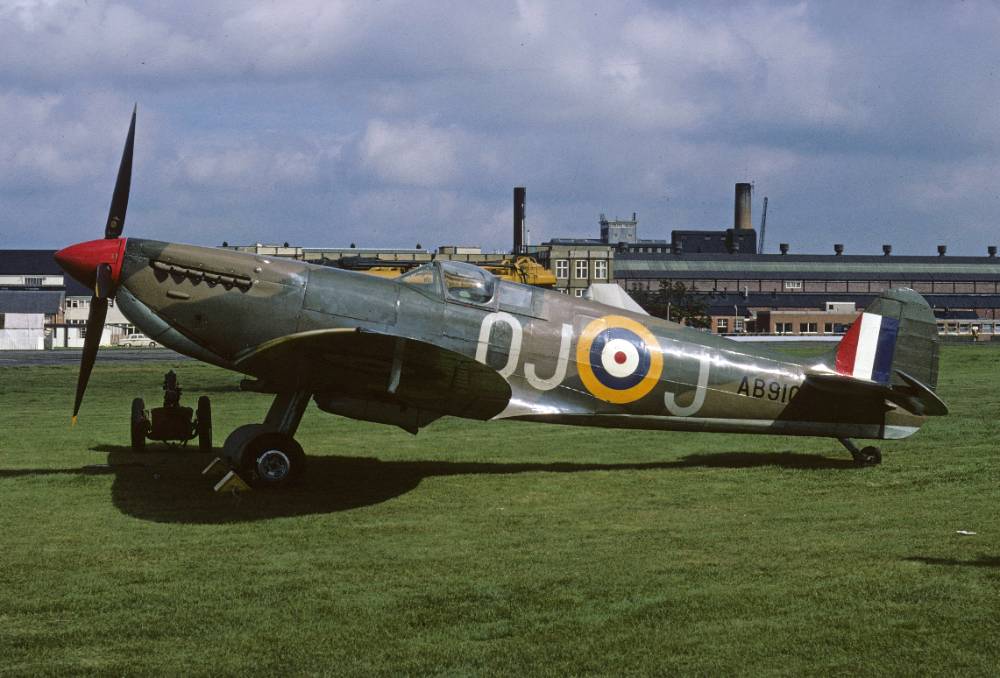
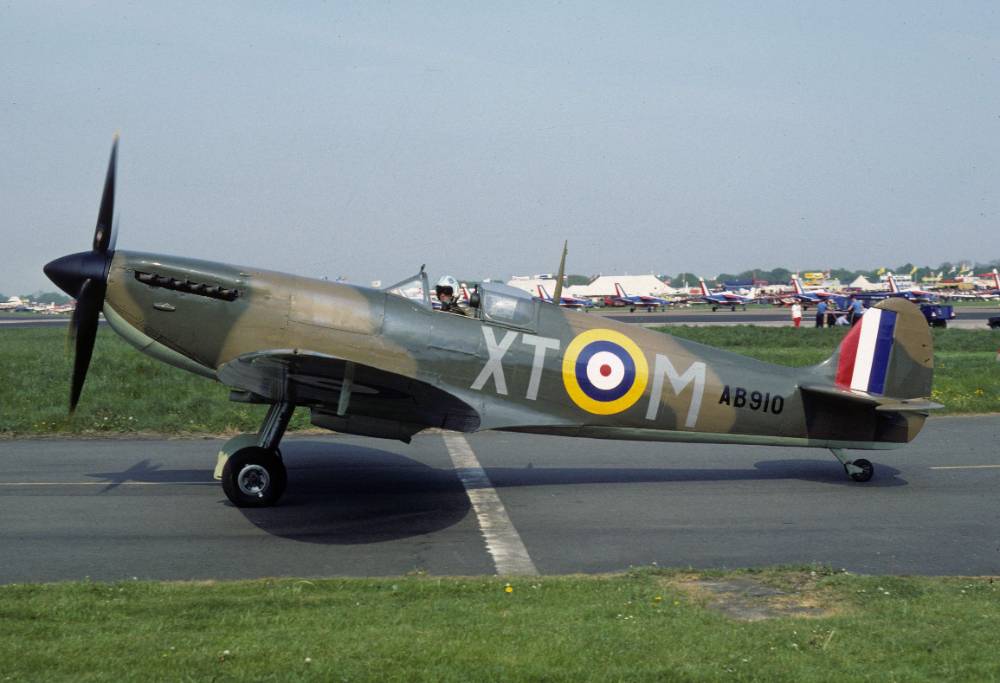
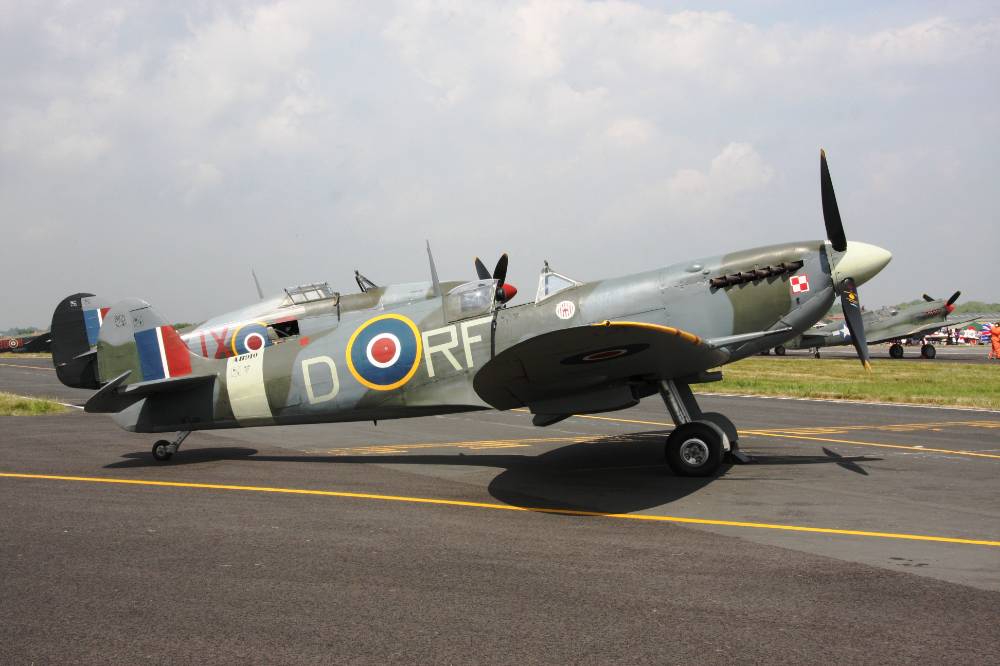
Above images courtesy of Adrian M Balch
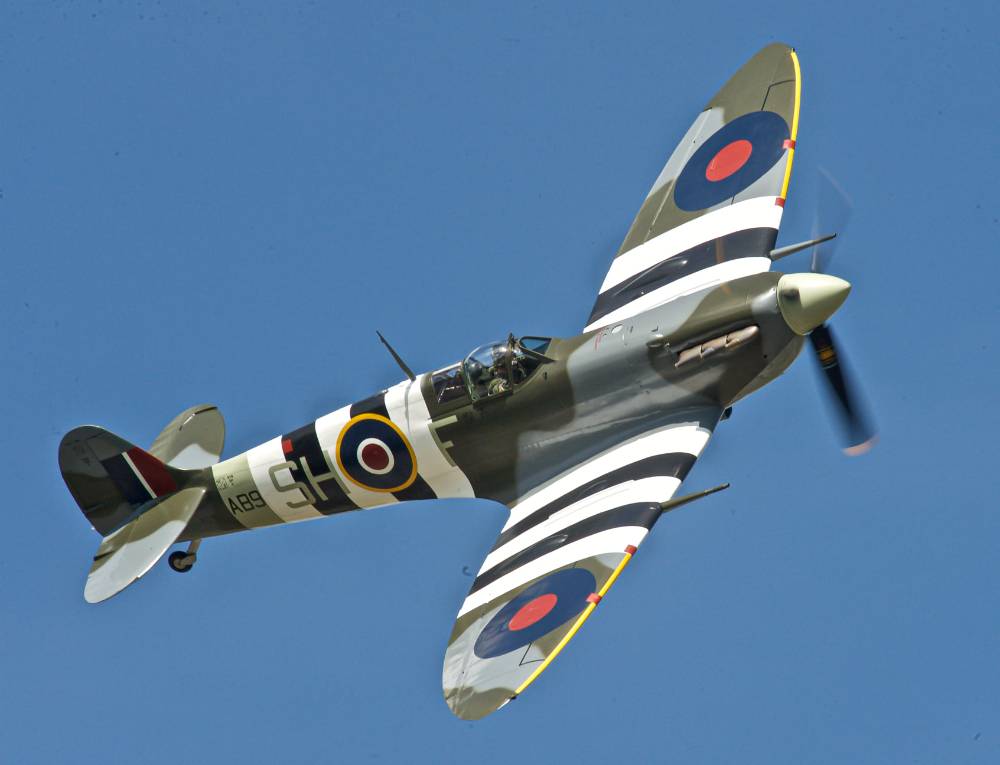
Image courtesy of Jim Baker
Spitfire P7350
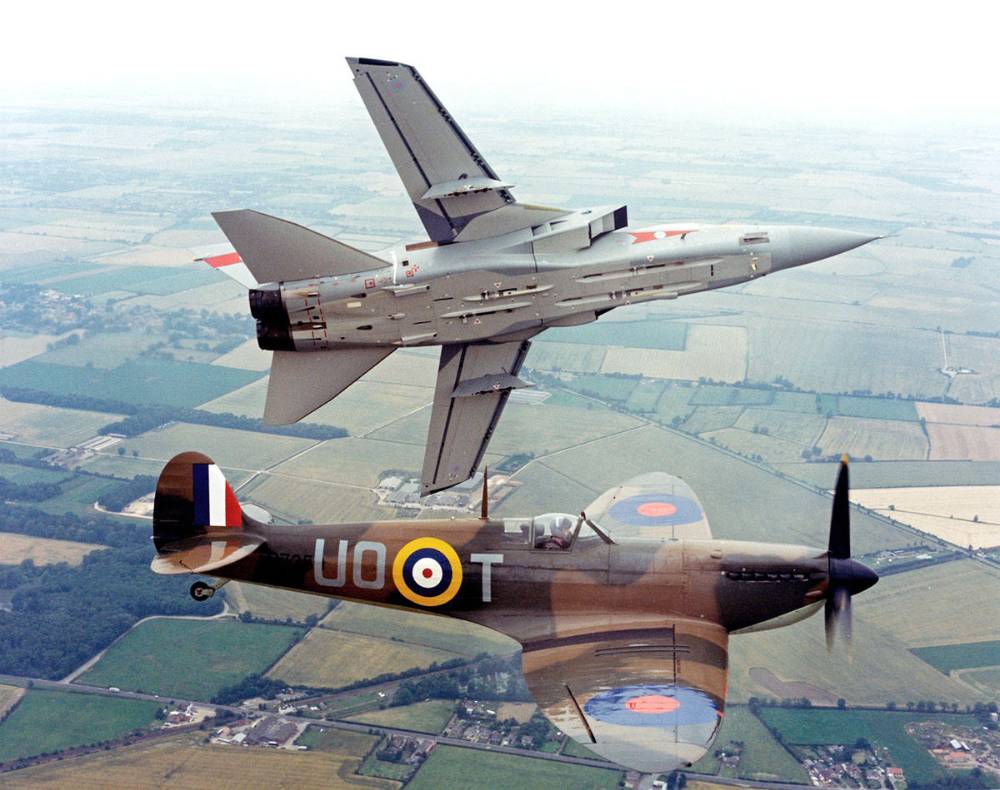
Image courtesy of Rick Brewall
Supermarine Spitfire P7350 was built at Castle Bromwich in 1940 and delivered to 6 Maintenance Unit later that year.
P7350 was operated by several squadrons during her RAF service, and later used as a static exhibit in a museum, before being flown in the Battle of Britain film. In 1968 P7350 was presented to the Battle of Britain Memorial Flight at RAF Coningsby.
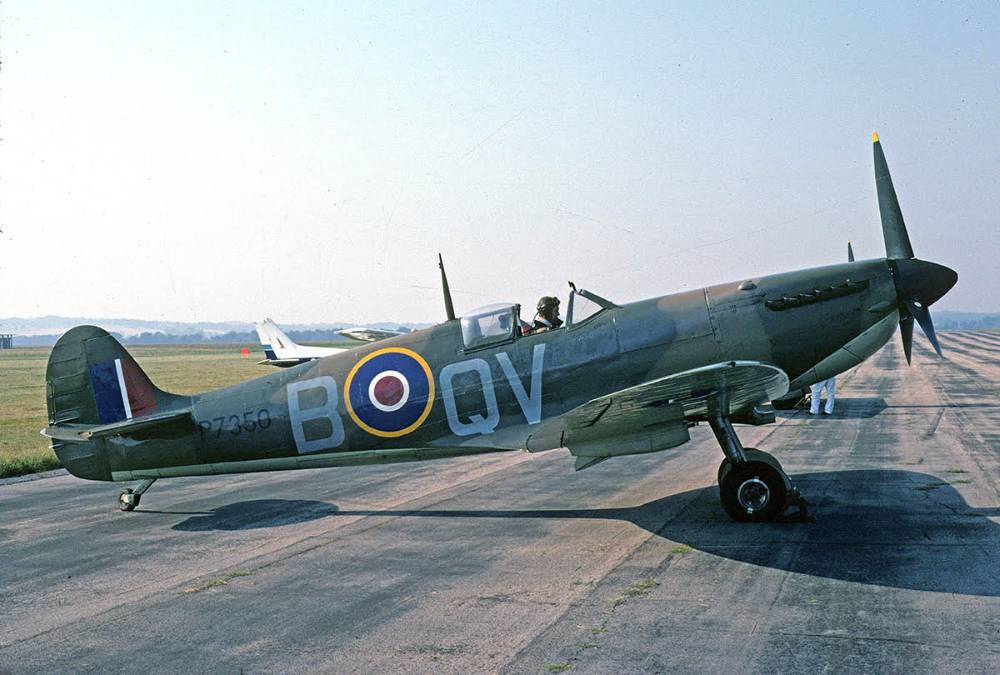
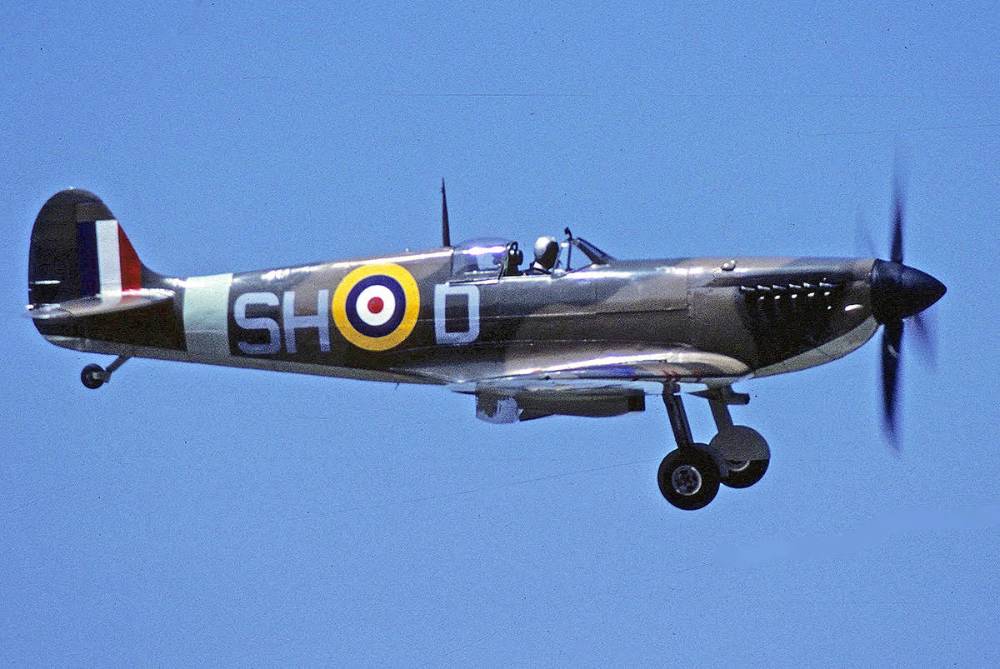
Above Images courtesy of Adrian M Balch
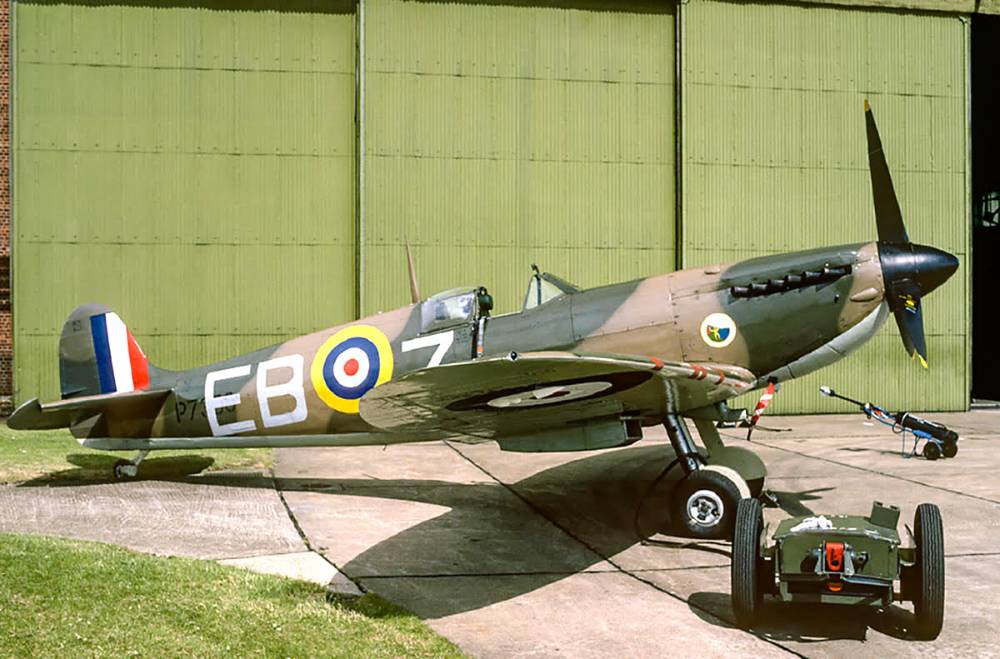
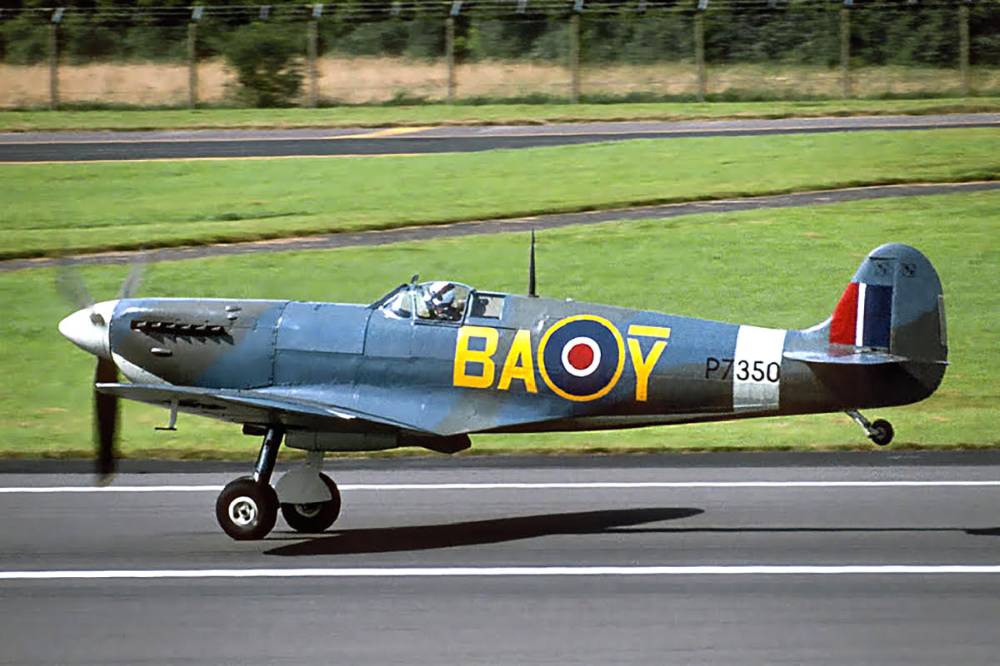
Above Images courtesy of Colin Smedley
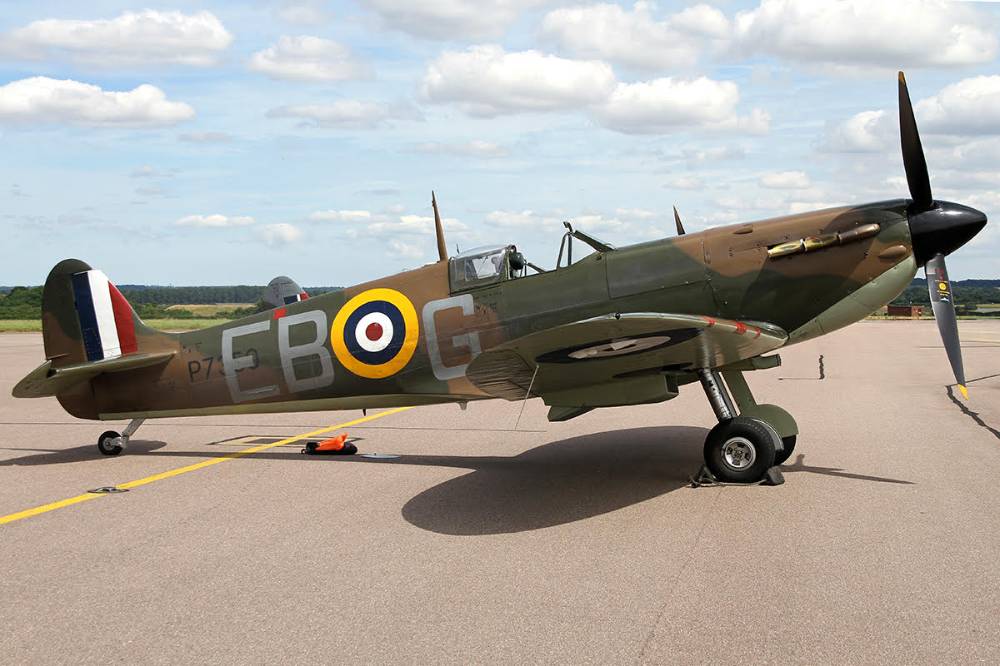
Image courtesy of Adrian M Balch
Spitfire MK356
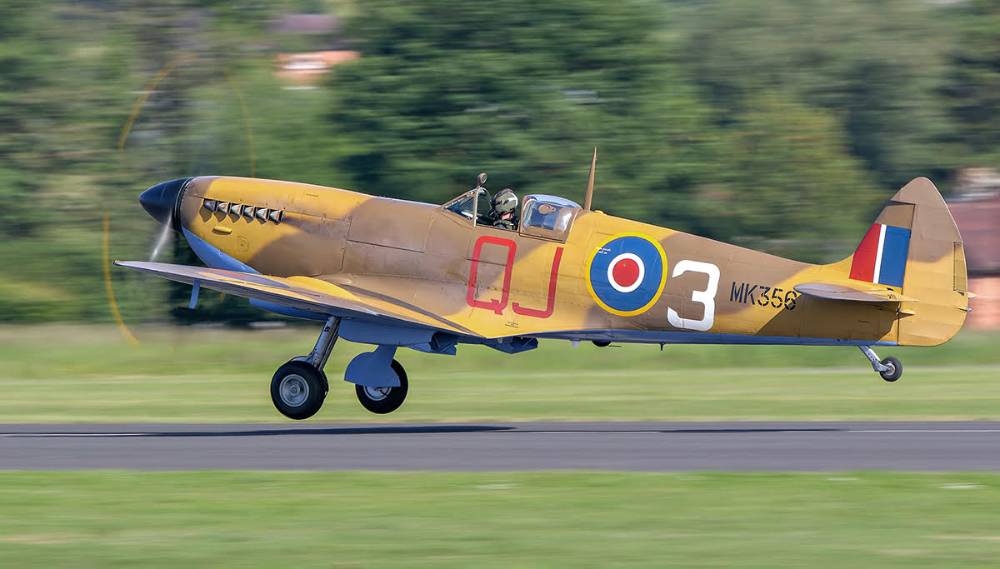
Above MK356 in her present colour scheme, Image courtesy of Mike Gauckwin
MK356 was built at Castle Bromwich, like many more Spitfire's, and was operated by several squadrons. Her claim to fame was for flying 60 operational sorties in 60 days, suffering three wheels up landings, after being damaged by enemy fire.
MK356 spent over 50 years as a museum exibit, before being returned to airworthy condition, eventually being delivered to the BBMF in the autumn 1997.
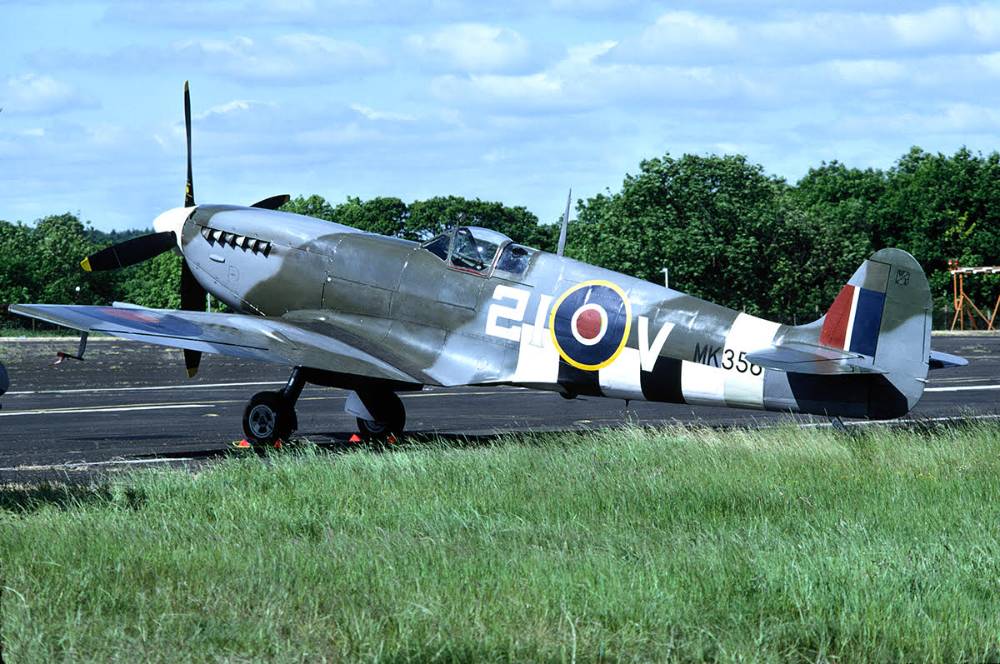
Image courtesy of Adrian M Balch
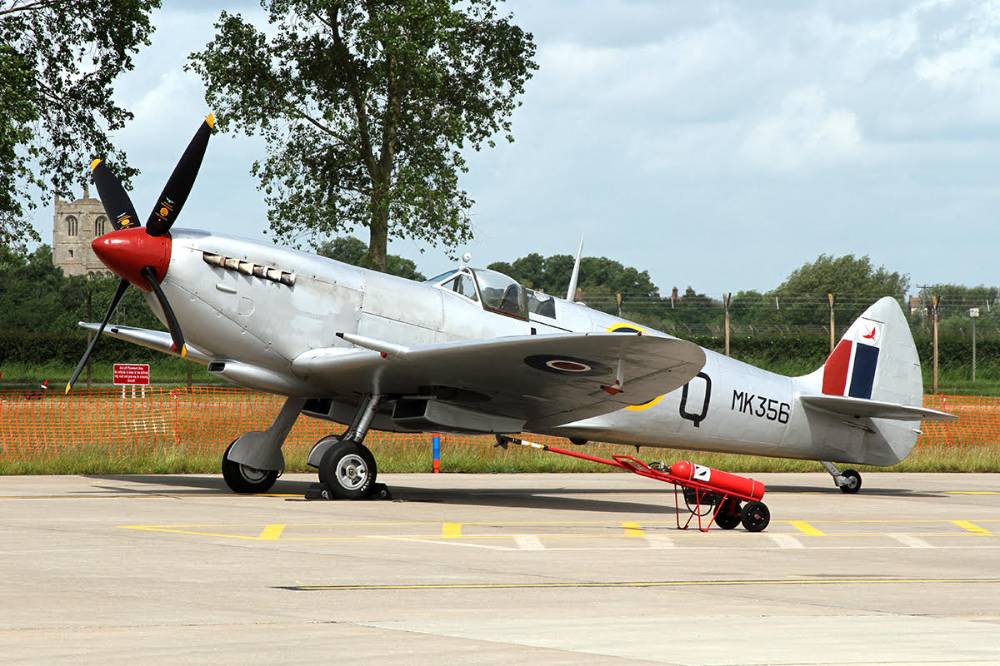
Image courtesy of Mark Young
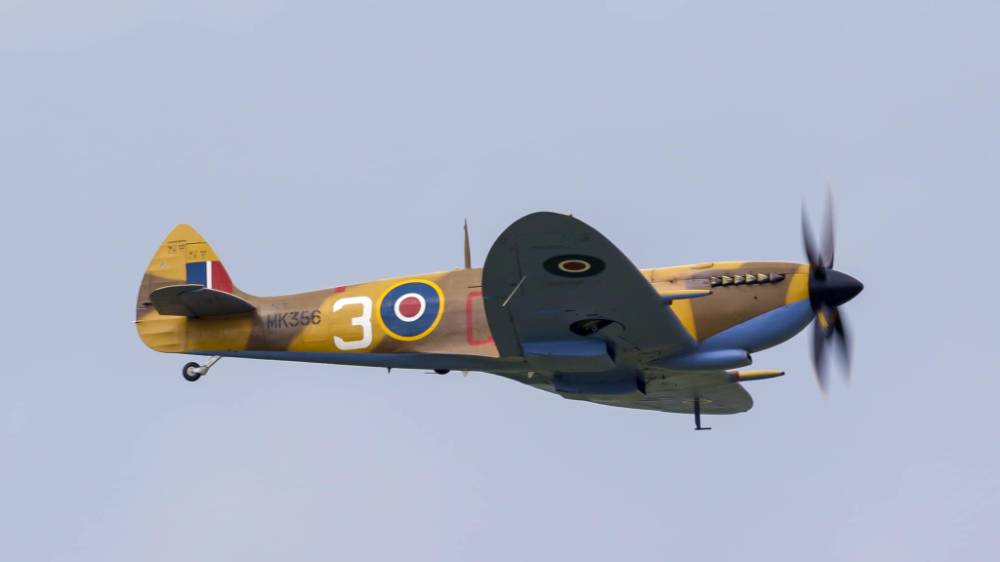
Image courtesy of Stewart Jack
Spitfire TE311
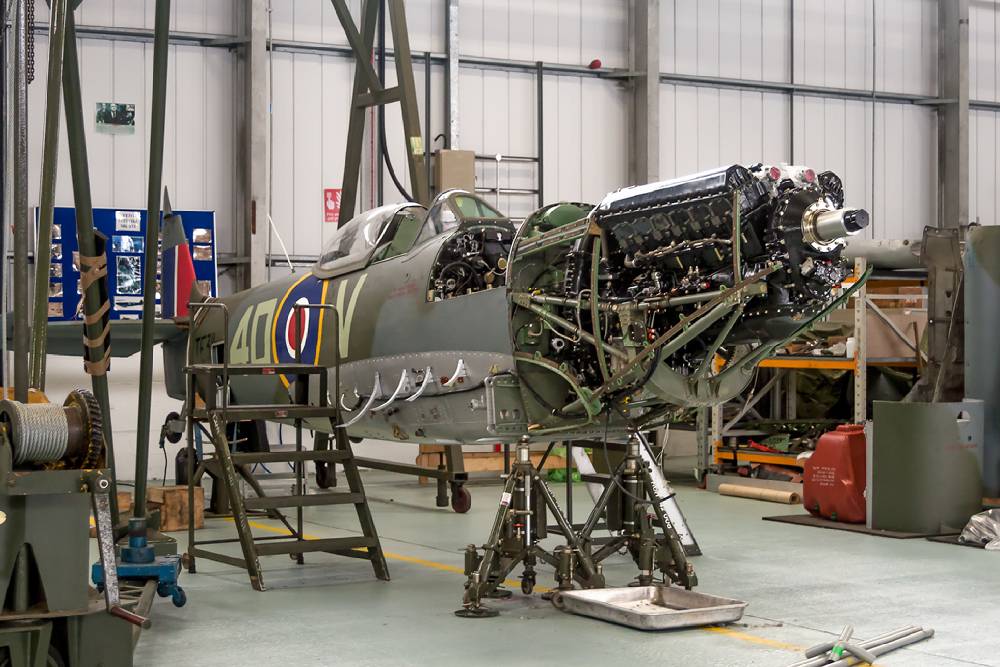
Image courtesy of Colin Smedley
Spitfire TE311 arrived at Coningsby as a spares source for the Flight's other Spitfire's, It was found to be in such good condition, that a decision was made to restore it to flying condition when the time and engineers were available.In fact it took many years for the restoration and the aircraft made its post restoration flight on the 19th October 2012.
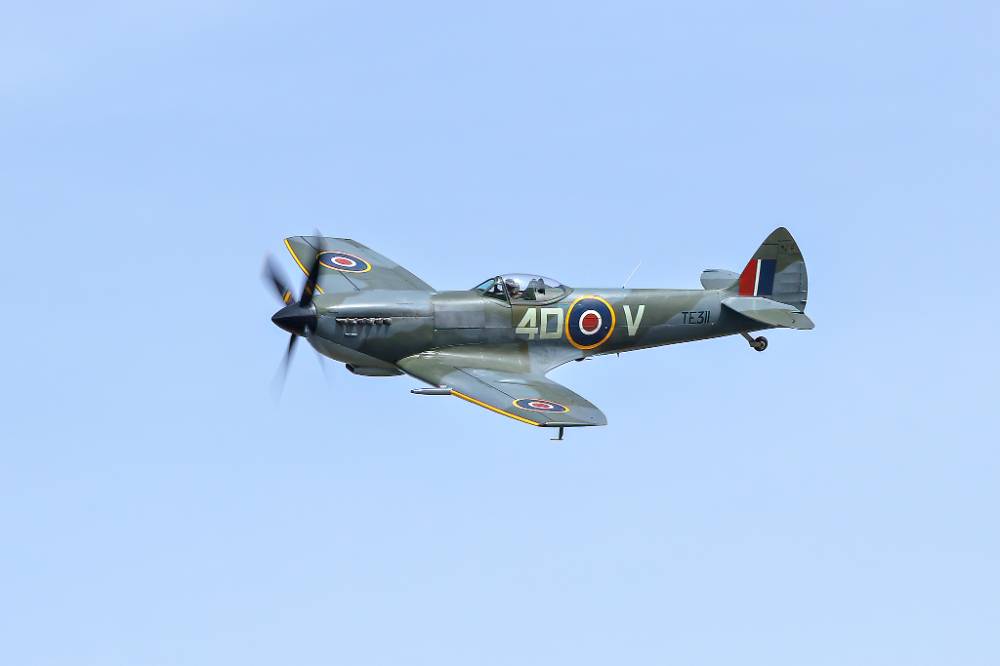
Image courtesy of Mike Gauckwin
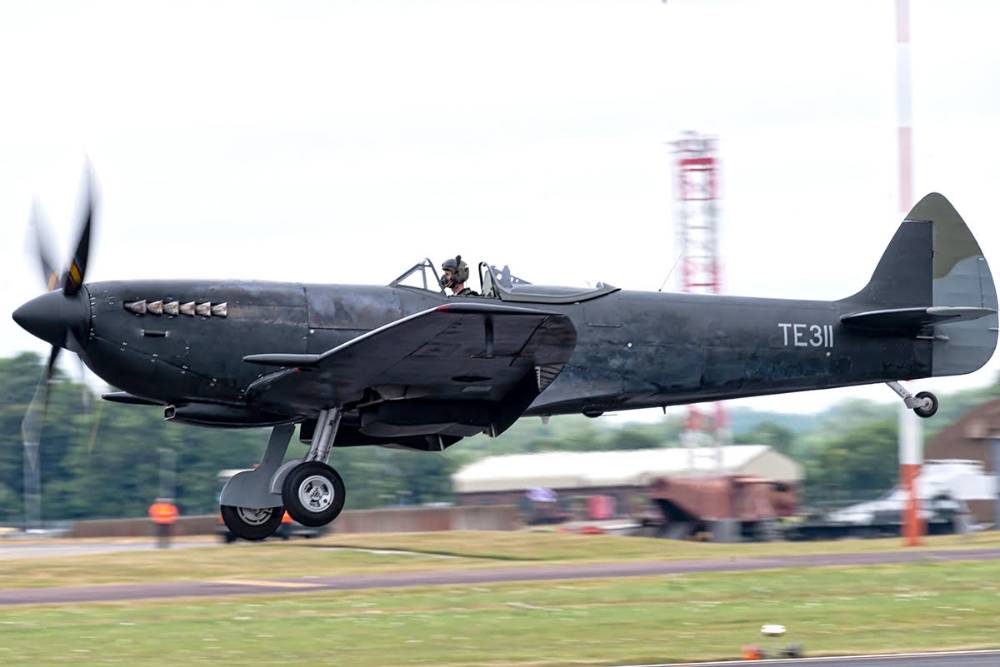
Image courtesy of Richard Malcolm
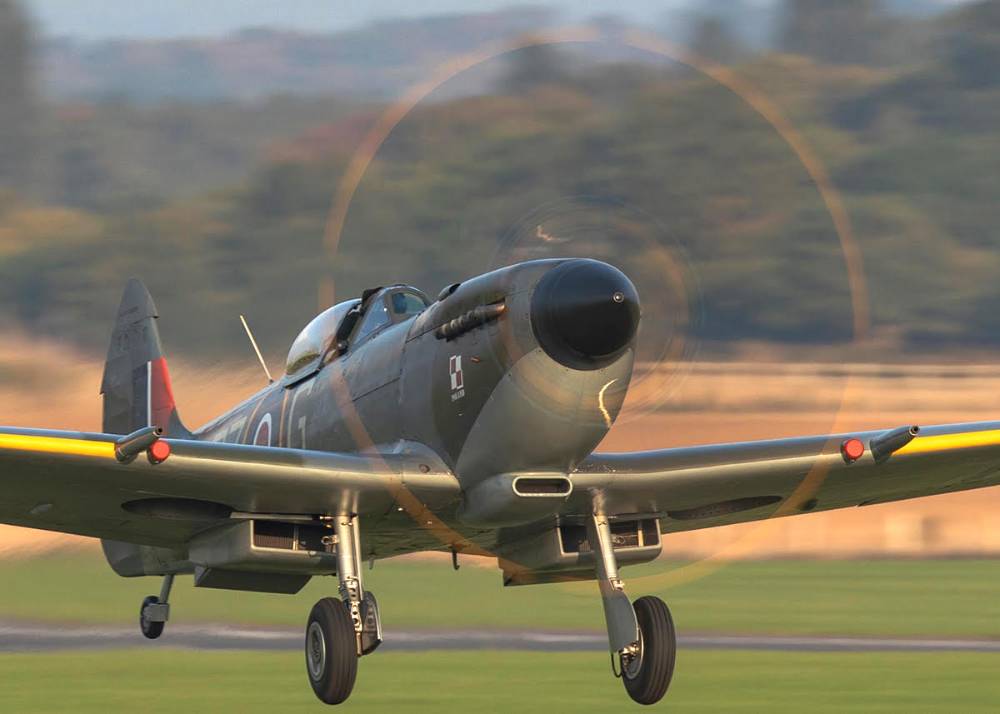
Image courtesy of Paul Chapman
The Chipmunks
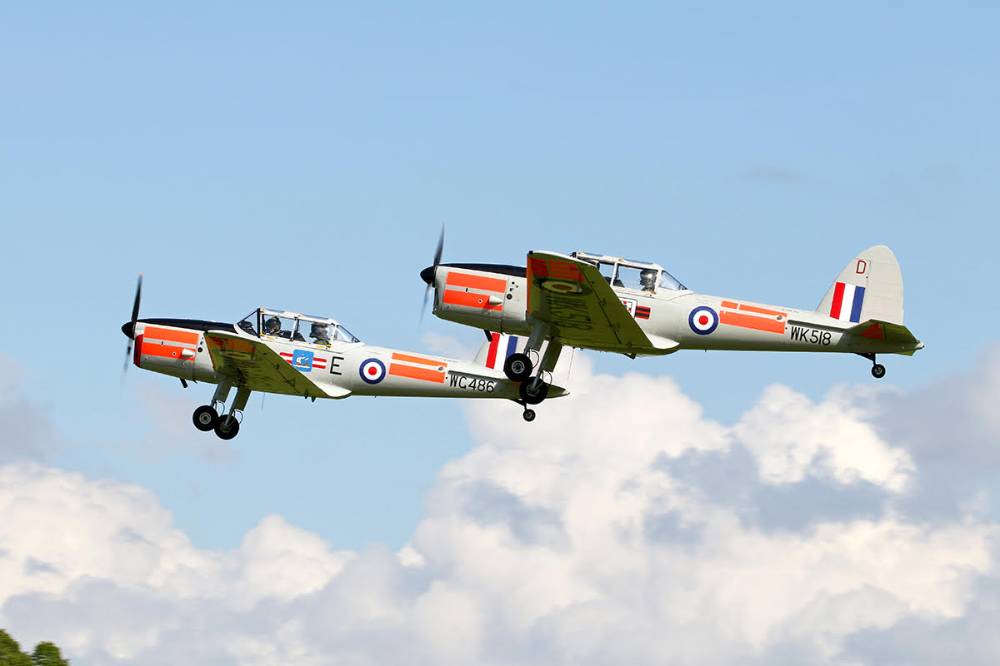
Both Chipmunk's in the present day colour scheme.
Image courtesy of Mark Young
The Battle of Britain Flight operates the last two Chipmunks in RAF service. For many years the Chipmunk was the main aircraft used by the RAF for training new pilots. The aircraft are used for converting new BBMF pilots onto tail dragger aircraft, before moving onto the Harvard and finally the Flight's Fighters. Other uses are keeping the pilots current during the winter maintenance period and ferry flights around the country.
Chipmunk WG 486
WG 486 was built in 1952 as a Chipmunk T.10, and served with several RAF units before joining the Flight in 1995, including the Gatow Station Flight.
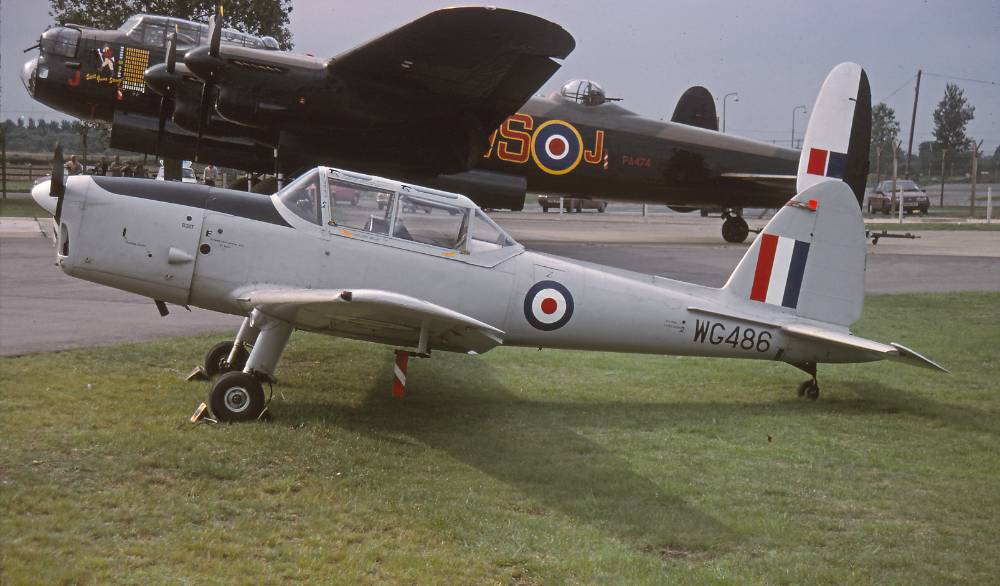
Image courtesy of Adrian M Balch
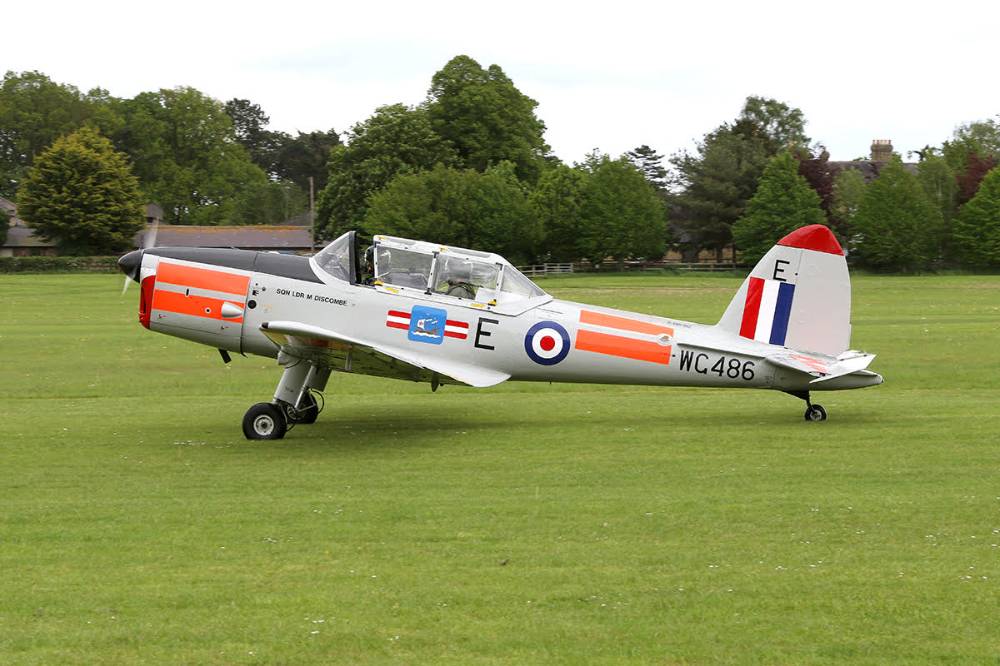
Image courtesy of Mark Young
Chipmunk WK 518
WK 518 was built in 1952 as a Chipmunk T.10, and served with several RAF units before joining the Flight in 1983.
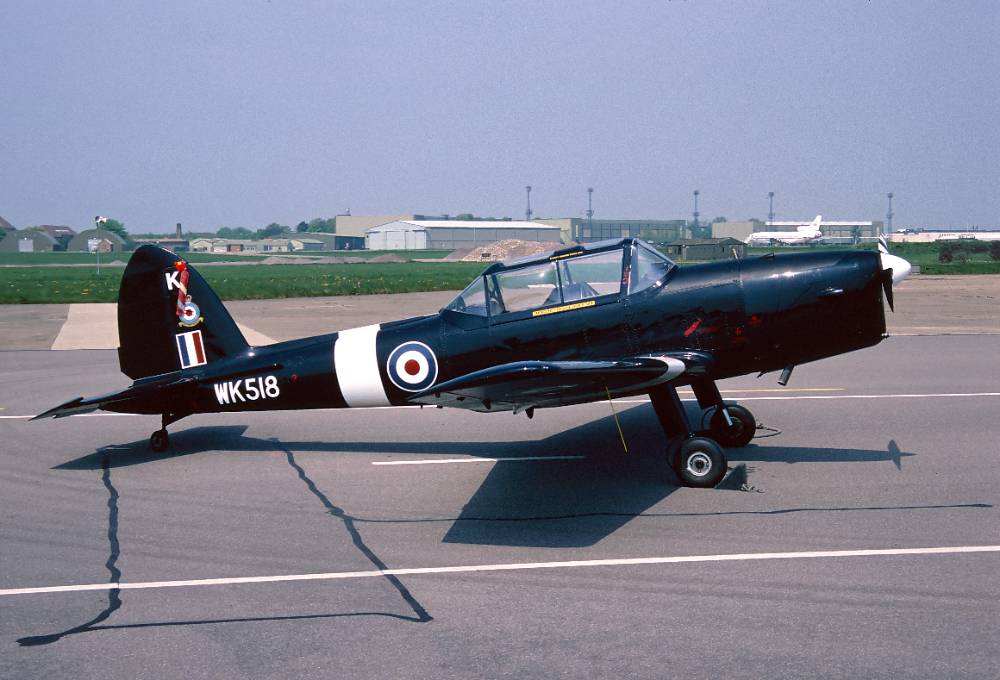
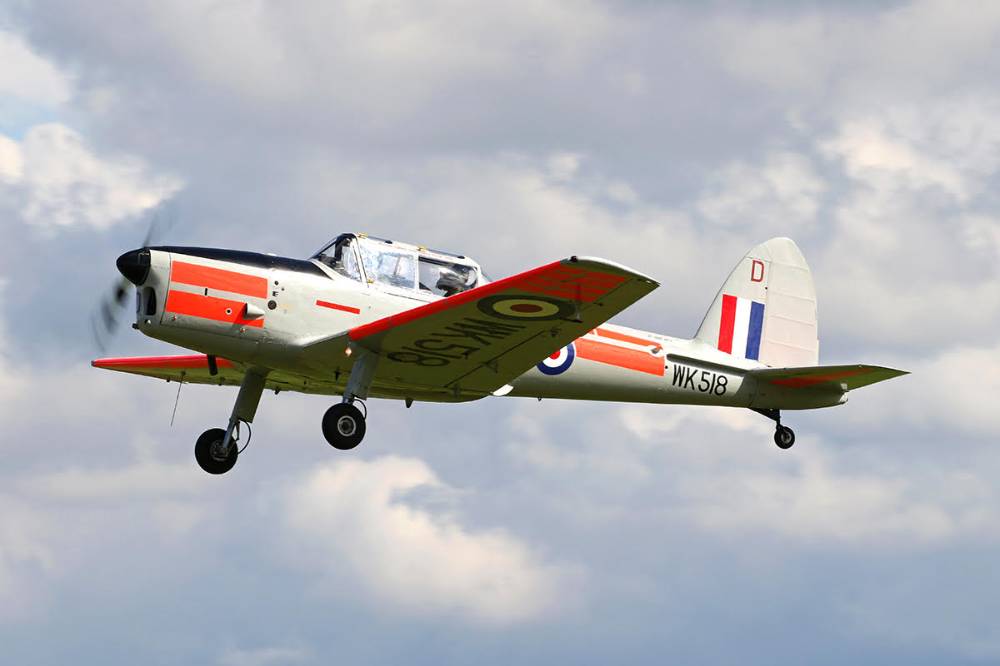
Above images courtesy of Mark Young